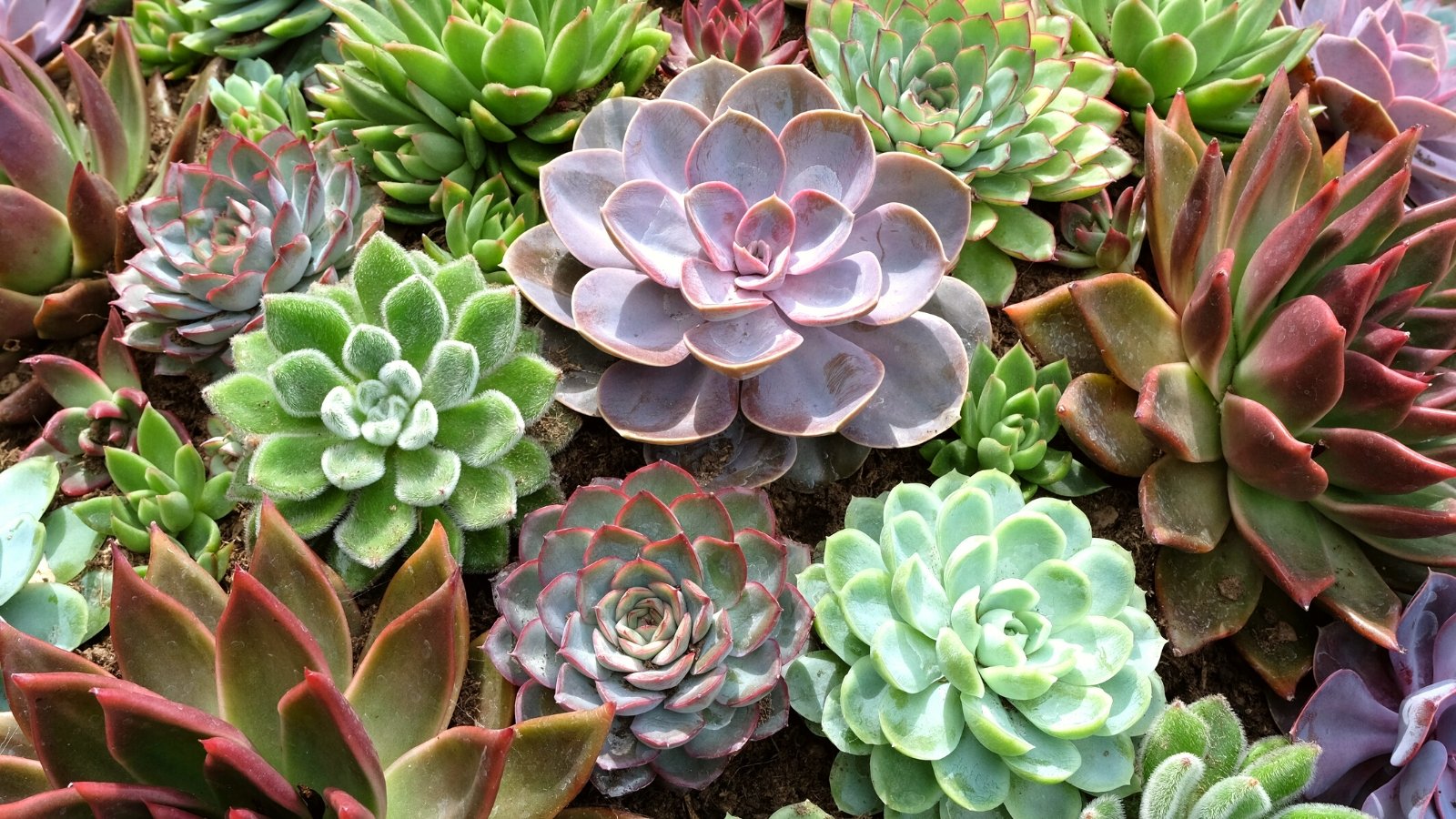[ad_1]
Echeverias are pleasant and easy-to-maintain succulent crops. They’re versatile and don’t require rather a lot from their homeowners. These pleasant little crops like to change colors when thankfully careworn from chilly or direct photo voltaic publicity. Most produce nice flowers all through the summer season season months, as correctly. They’re extraordinarily resilient and easy to propagate.
In case you want to add some echeverias to your succulent yard or assortment, there’s every kind to pick from. They arrive in a number of colors, along with utterly totally different leaf shapes and orientations.
All it’s advisable to attain success with these crops is a sunny window and some well-draining soil. Listed beneath are a number of of my favorite types of echeveria that may work good in your succulent yard.
Perle von Nurnberg
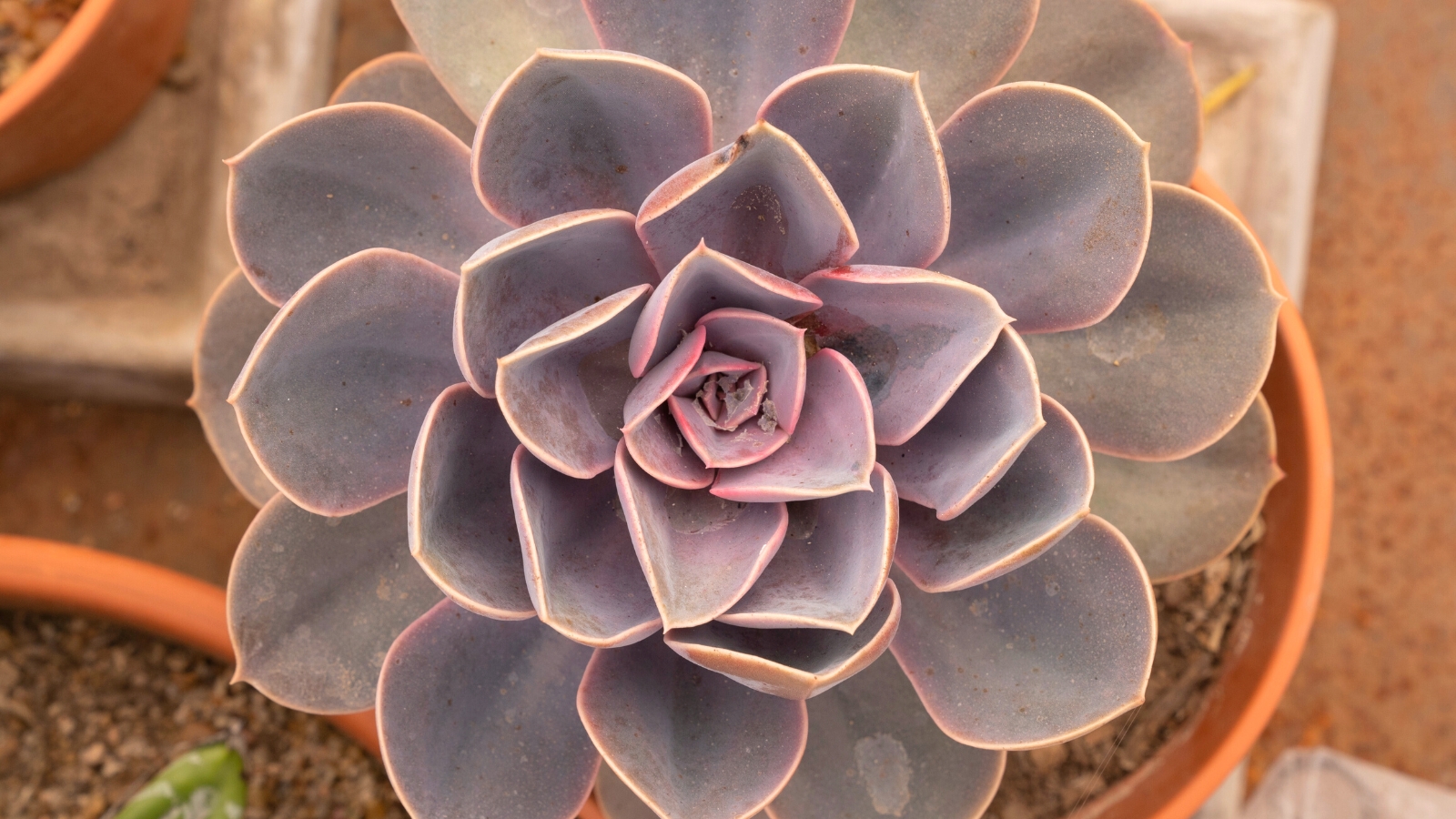

‘Perle von Nurnberg’ is probably going one of many hottest types of echeveria. Florists love this cultivar for its mild, gray-blue leaves with their rounded edges and pointed concepts. The leaves develop in a finely ordered rosette. A fragile dusting of top of the range white powder makes the plant way more mild and pretty.
This choice has a reputation for being a large bloomer. A plant can ship up quite a few flower spikes in a 12 months. These slender flower spikes produce coral-colored blooms that look gorgeous in floral preparations. It might bloom biggest in full photo voltaic.
Neon Breakers Desert
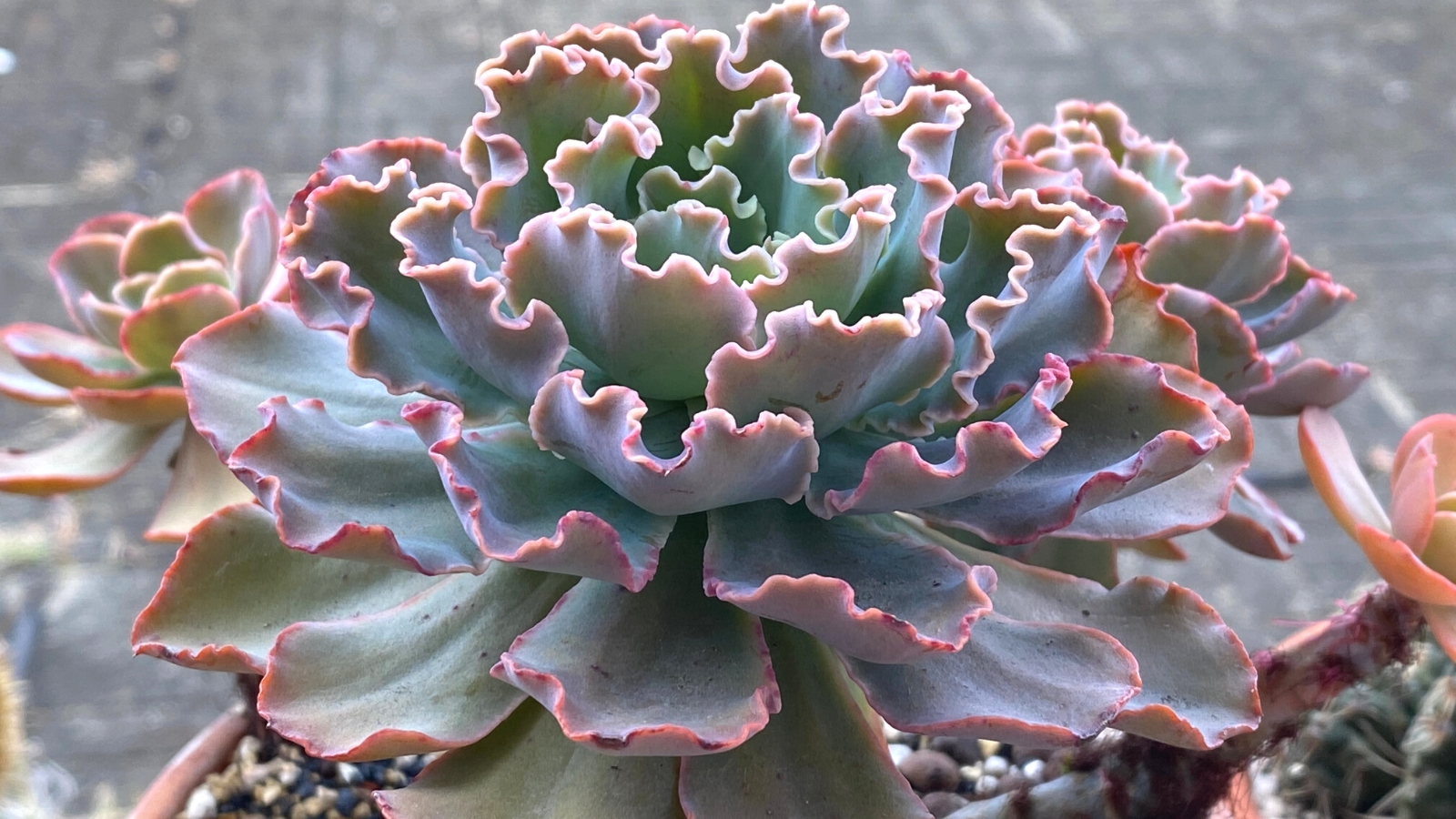

‘Neon Breakers’ has pleasant leaves with evenly ruffled leaves. The leaves start pale grey-green, nevertheless with ample photo voltaic, they age to a silvery-violet shade. Many types of echeveria have this attribute. Stress from daylight and chilly may trigger their leaves to blush.
It’s a small cultivar, reaching solely six inches tall at maturity. It is fast-growing and produces purple flowers in late summer season season and early fall. ‘Neon Breakers’ will tolerate full photo voltaic, however when it appears to be very careworn, attempt partial shade.
Blue Fowl
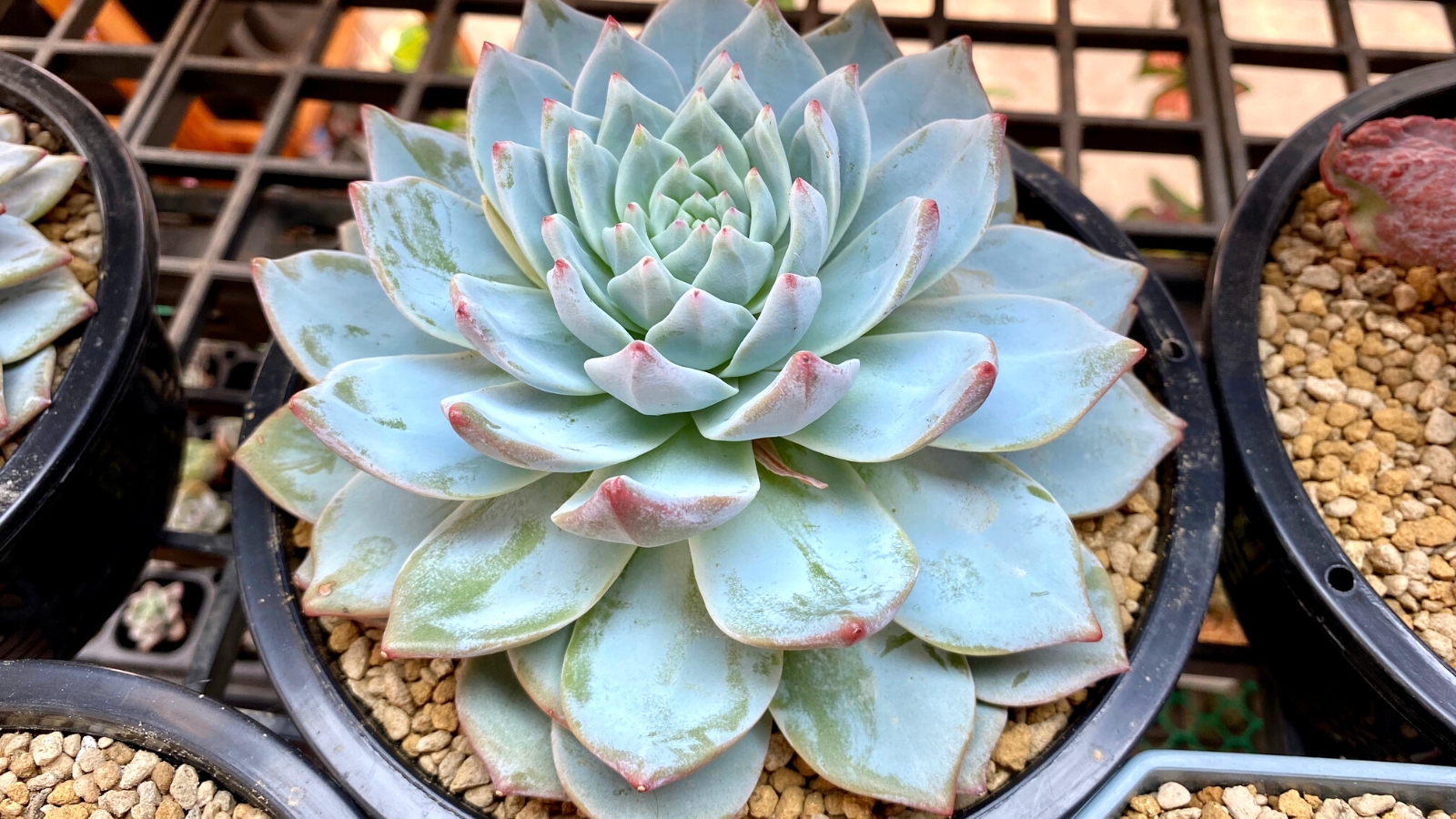

The plump, blue-green leaves on ‘Blue Fowl’ make this a pleasant cultivar. These echeverias have a pillowy look with pointed ends and simple, rounded margins. The leaves flip pink throughout the sides in cool local weather, together with curiosity throughout the winter.
This choice has the top quality, white, powdery look frequent to the genus. It’s going to most likely tolerate full photo voltaic to vivid, indirect mild when grown indoors. Pink flowers bloom in early fall.
Berkeley Mild
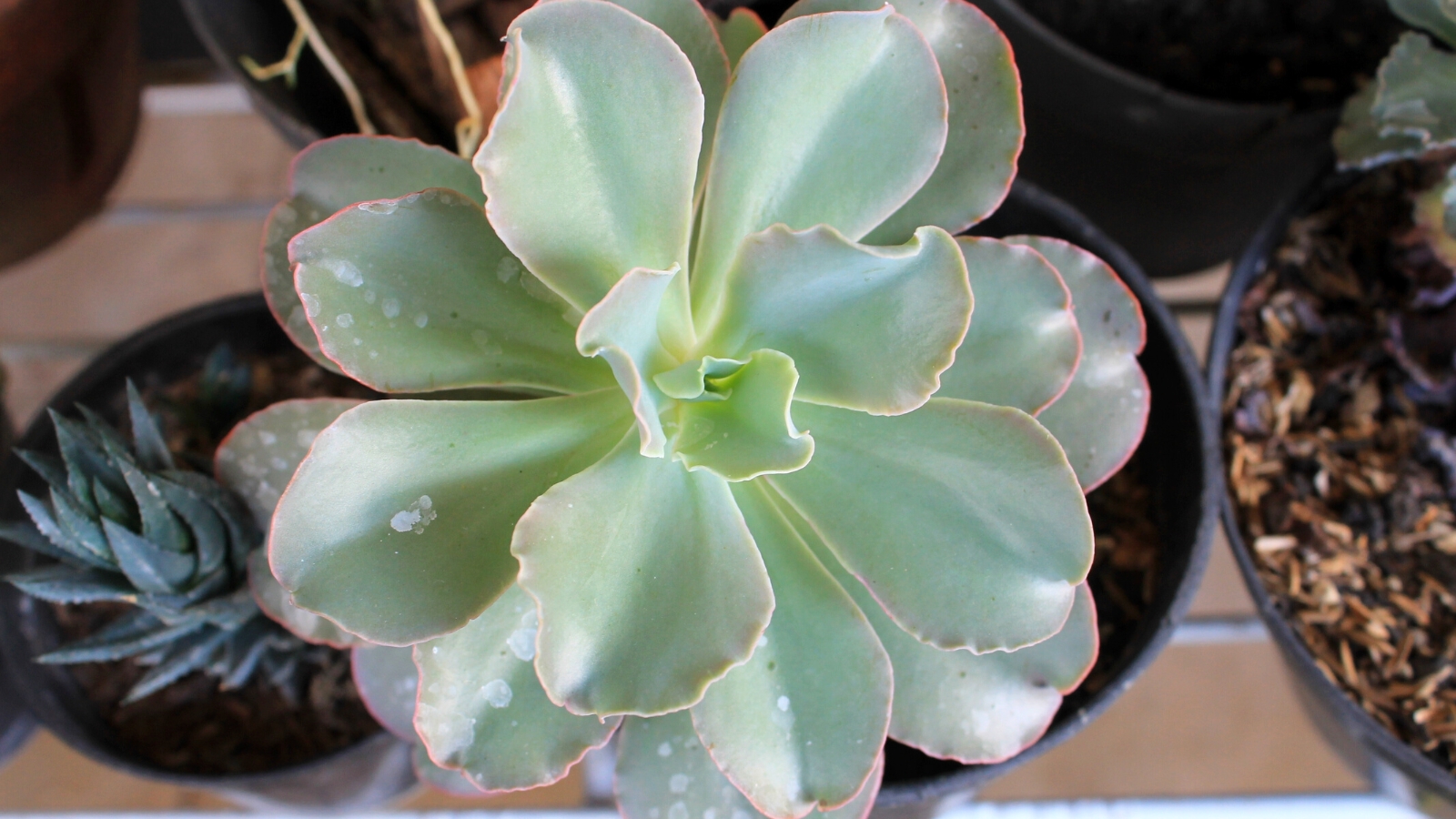

This distinctive and pleasant cultivar has luminous, variegated leaves. These evenly ruffled leaves are white with celadon inexperienced accents and a slight pink blush throughout the sides. The leaves variety a unfastened rosette, which grows to about 4 inches tall.
‘Berkeley Mild’ performs biggest in vivid nevertheless indirect daylight. It might tolerate some direct photo voltaic, nevertheless this might stress the plant, inflicting additional pink coloration. Higher than its flowers, this choice’s leaves are its most distinguishing attribute.
Raspberry Ice
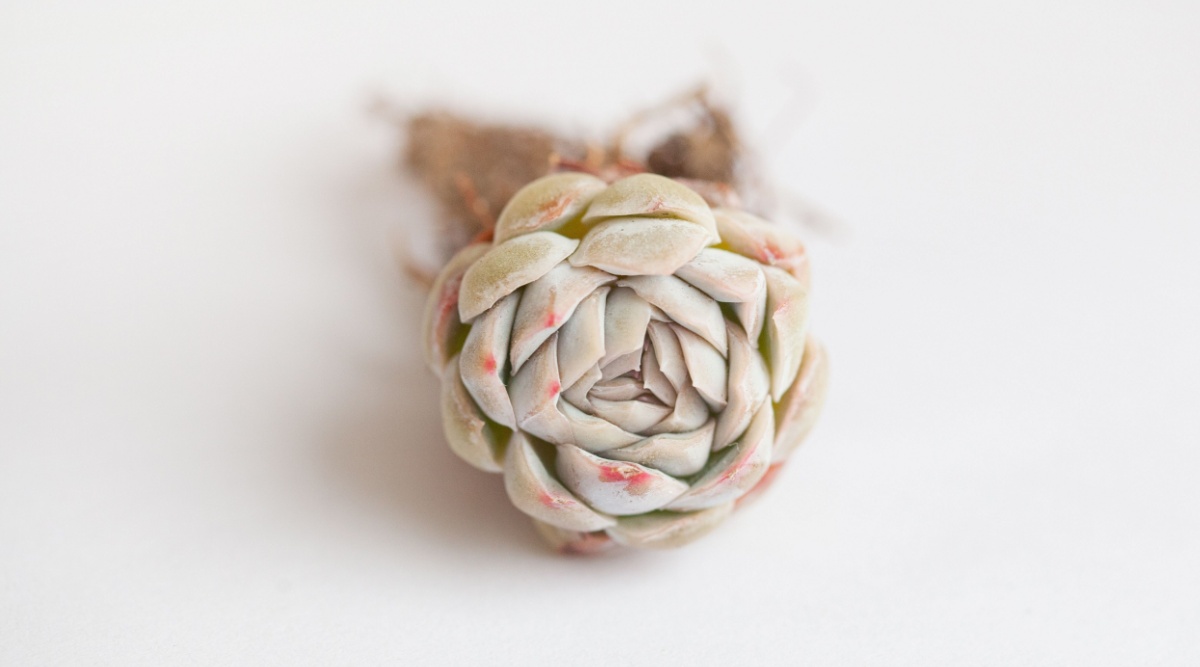

One different choice that is in fashion with florists, ‘Raspberry Ice’ has fascinating leaves. The leaves are straightforward and pointed on tight rosettes that typically keep closed. These rosettes are spherical comparatively than opening flat, although some do open completely.
‘Raspberry Ice’ prefers vivid, indirect daylight within the summertime nevertheless can tolerate some direct photo voltaic in fall and winter. The leaves are pale inexperienced throughout the center and coral pink on the pores and skin. When this choice blooms, its flowers are a shocking shade of yellow.
El Encino
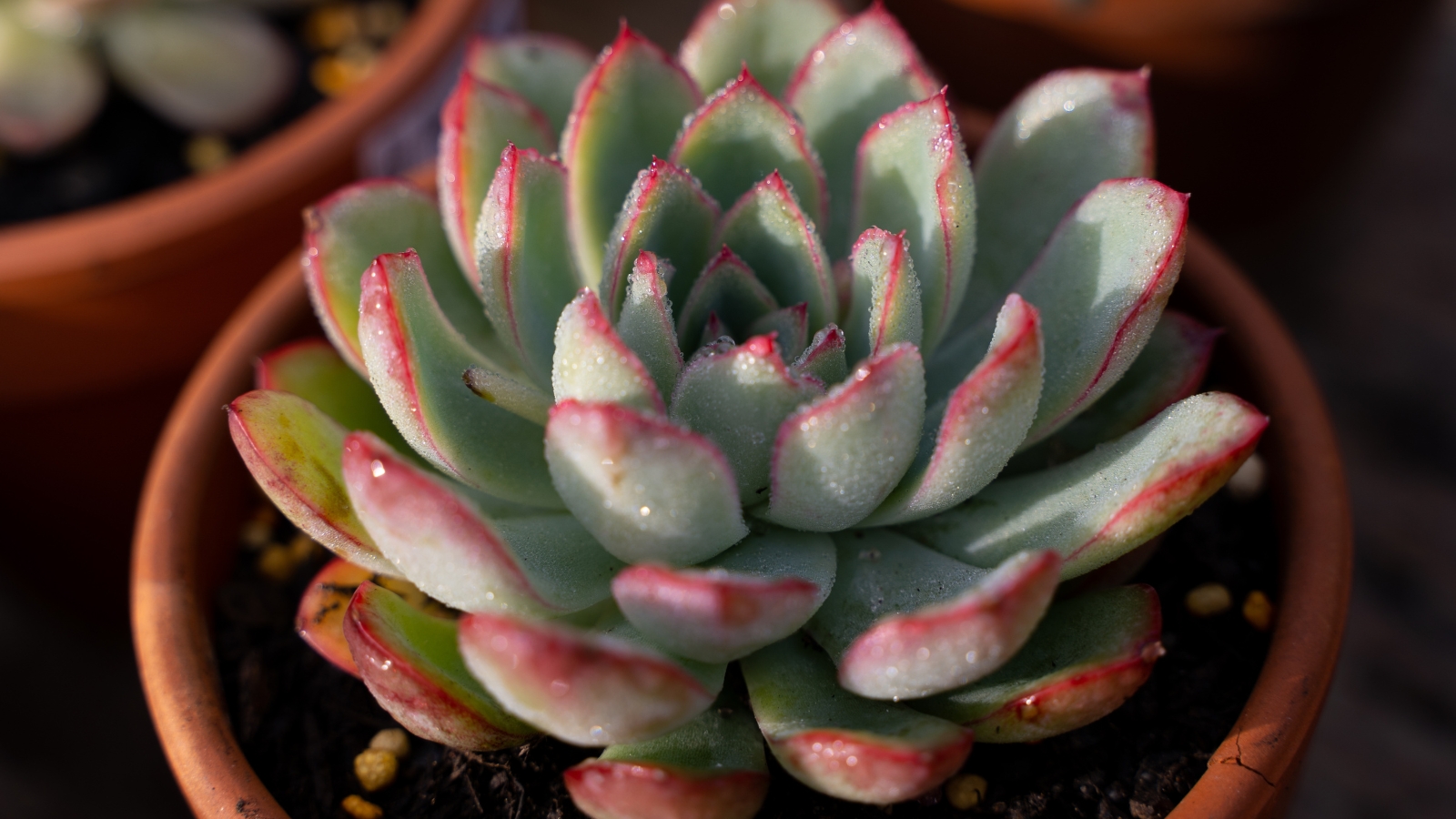

‘El Encino’ is a vibrant little echeveria. Each rosette consists of many tightly organized leaves. These fairly leaves are pale inexperienced with vivid reddish-orange edges and small, pointed concepts. This choice stays small and neat wanting. The leaves will change shade beneath stress, taking up additional of a reddish tint.
Make it possible for to plant your echeverias in unfastened, well-drained soil. Echeverias like a bit additional moisture than most succulents. Don’t preserve once more on watering constantly in case your crops are outdoors. Water additional sparingly throughout the winter when the plant is dormant.
Cinderella
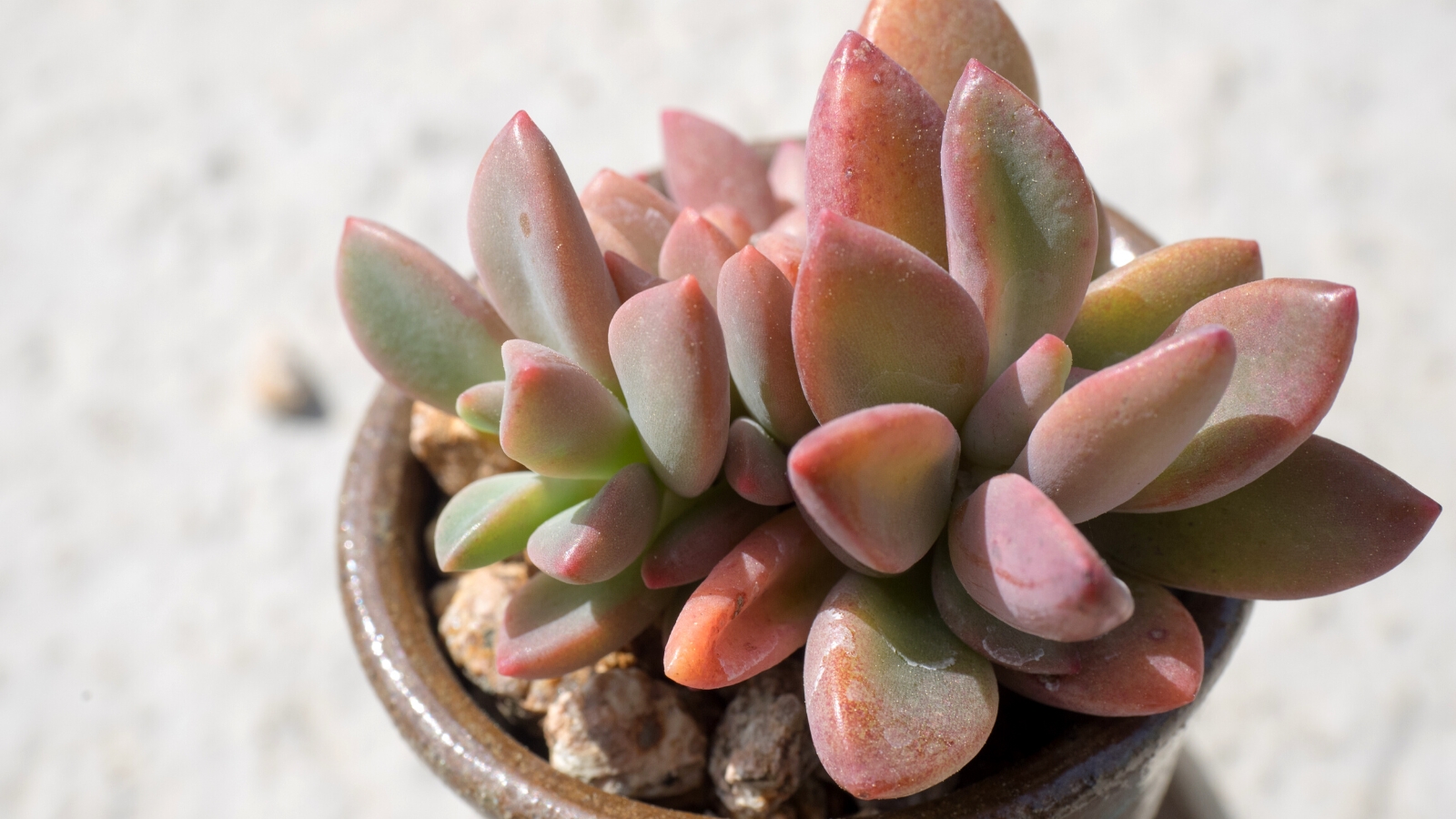

‘Cinderella’ has a novel look to the leaves. These fairly tight rosettes have longer, yellowish-green leaves that flip into additional inexperienced in direction of the center. The perimeters of these leaves are deep crimson and pointed on the ends. Some specimens even have flecks of crimson on the pores and skin of leaves.
It’s a unusual cultivar that could be robust to hunt out, making it good for the collector. As with most varieties, giving this plant additional daylight will deepen the crimson tones in its leaves. It’s a sign of stress, nevertheless a small amount of stress is unlikely to do any damage.
Blue Mist
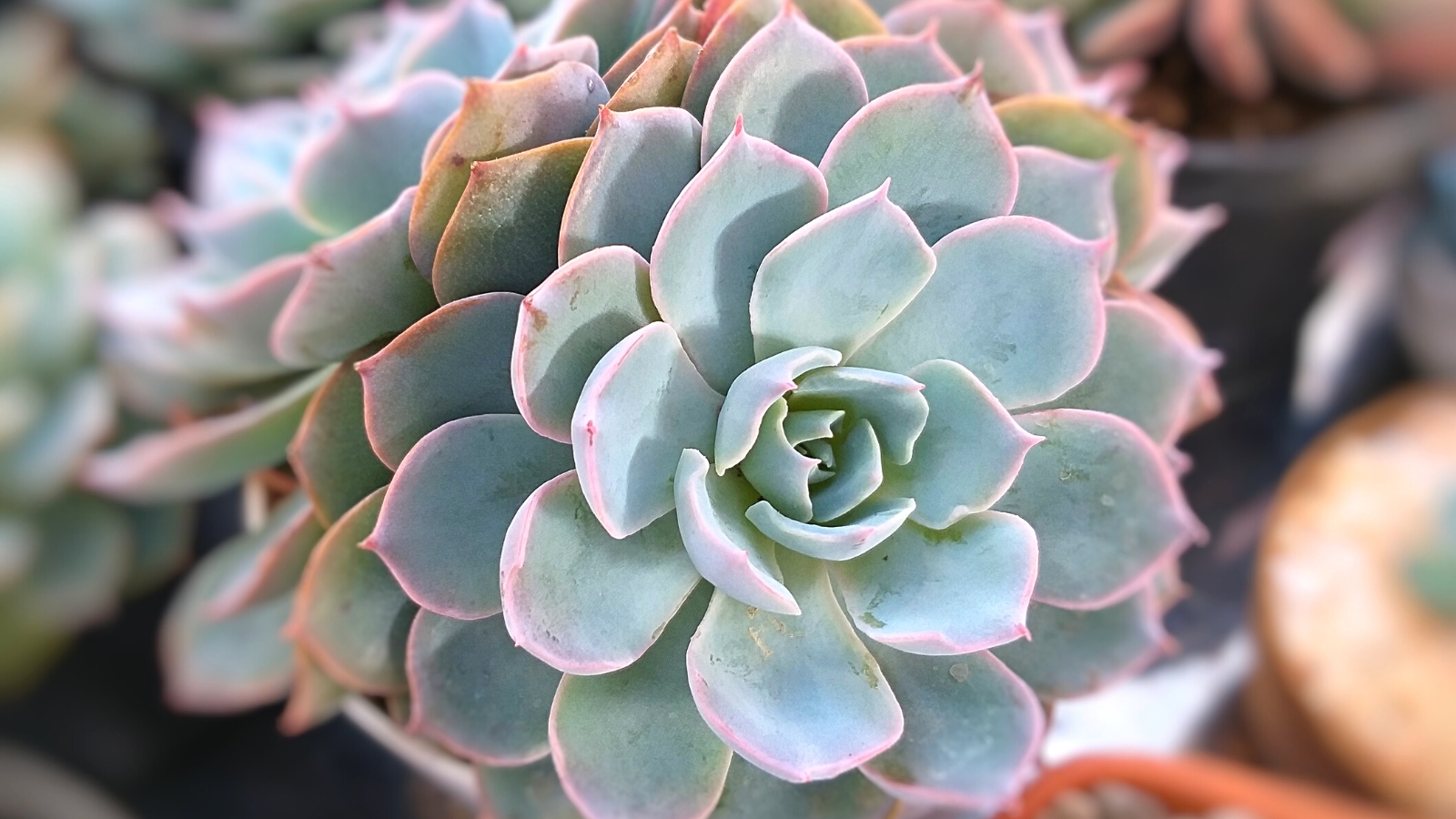

The delicate blue-green shade of “Blue Mist’s’ leaves is breathtaking. The tight rosettes of just about translucent leaves are very evenly tipped with pink. In cool winter local weather, the outer leaves will sort out a faint pink blush, as correctly. A rosy hue merely tinting the outer edges makes this plant way more gorgeous in dormancy.
Within the summertime, ‘Blue Mist’ will produce spikes topped with pretty yellow flowers. To maintain up the mild blue tones of the leaves, this choice shouldn’t get direct photo voltaic. Vivid, indirect mild is biggest for this choice.
Ramillete
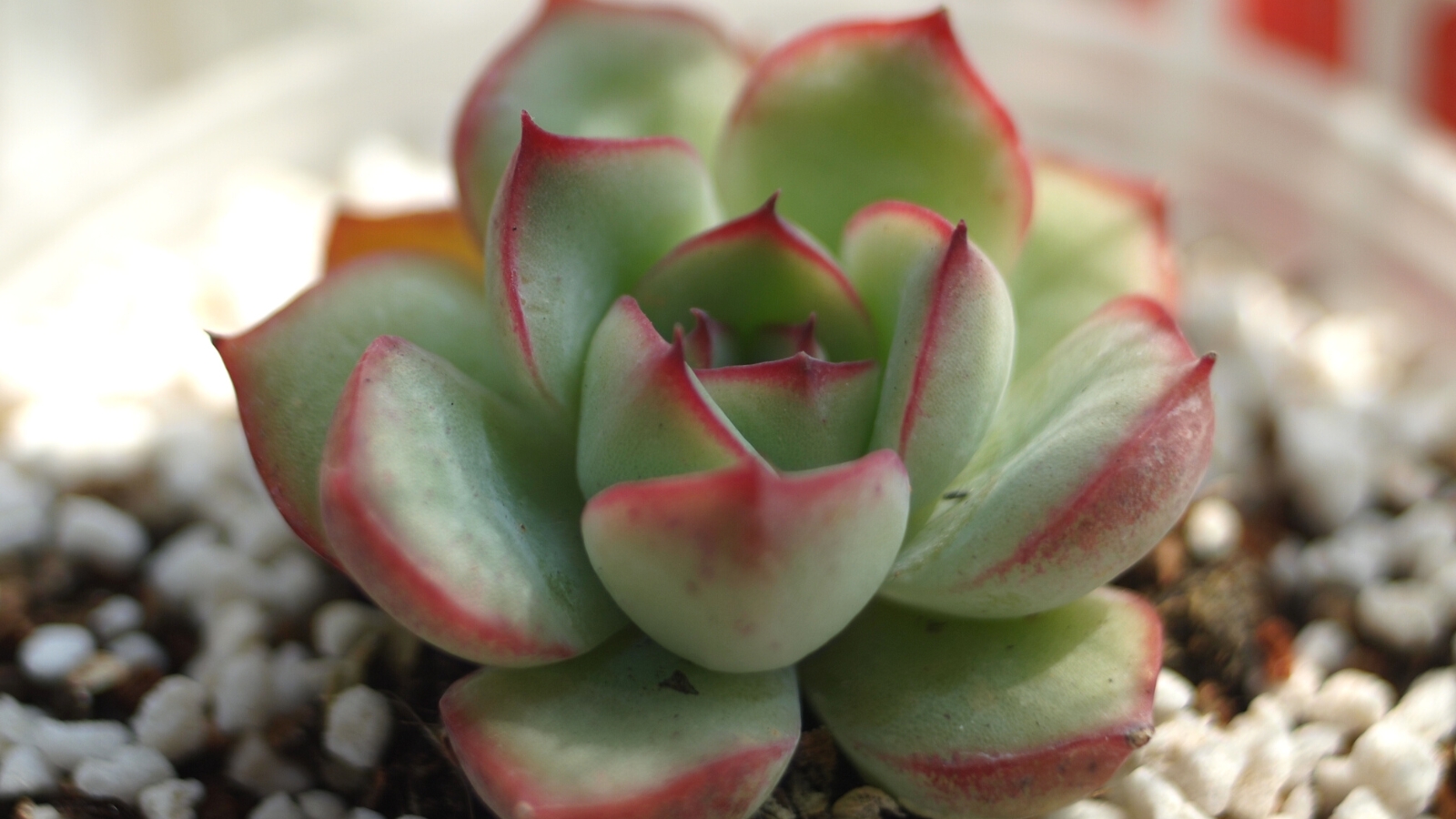

‘Ramillette’ is an easy-care echeveria that is tolerant of assorted mild conditions. The tight rosette of leaves is apple inexperienced with mild crimson accents on the rules and once more of the leaves. This hybrid choice is good at reproducing. It might put out offsets generally with the intention to propagate and share this plant with mates.
This cultivar will acknowledge some cool local weather throughout the fall and blush accordingly. Convey it indoors sooner than a frost, though. These won’t be chilly hardy. It’s a good bloomer, as correctly. In summer season season, anticipate many flower spikes sporting yellow and orange, bell-shaped flowers.
Black Pearl
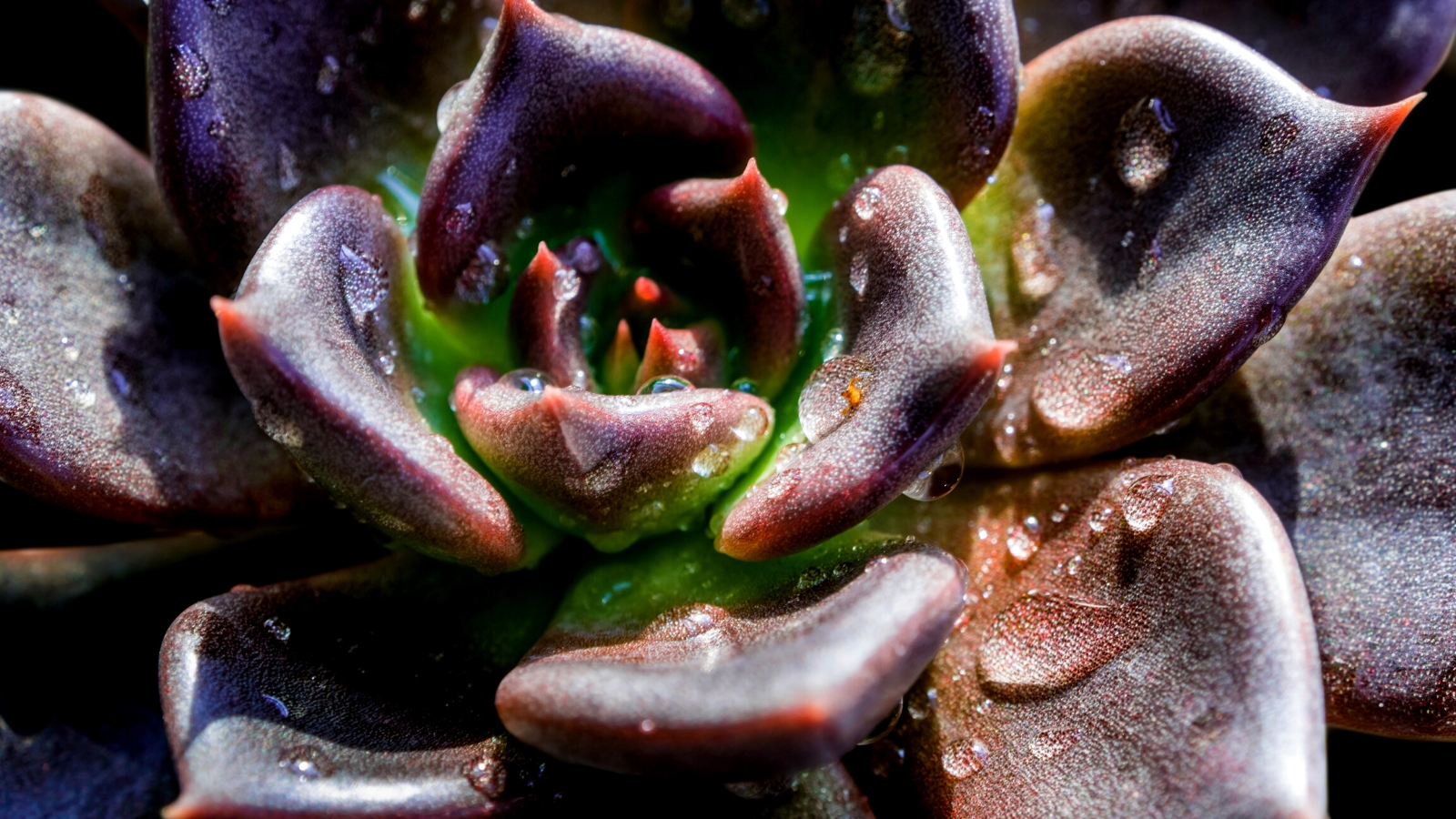

It’s a newer hybrid that resembles the favored ‘Black Prince’ nevertheless with smaller, additional rounded leaves. The type of ‘Black Pearl,’ as evidenced by the title, is additional spherical than totally different varieties that open flat. The fleshy, deep purple leaves are fast and curl upwards in direction of the center.
The leaves will finally open out, revealing vivid inexperienced throughout the center nevertheless sustaining their darkish purple ends. The ground of the leaves has a top quality white fuzz. This protects the plant from harsh photo voltaic publicity.
Violet Queen


The title ‘Violet Queen’ is deceptive, as this plant is a dusky inexperienced shade and by no means purple. The swish edges of the leaves have a crimson tint that intensifies in chilly local weather or with photo voltaic stress. The leaves on this choice are a bit utterly totally different from totally different varieties. They’re narrower on the ends and actually pointed. These pointed leaves arch backward, giving the plant an fascinating aptitude.
‘Violet Queen’ creates offsets readily, shortly forming an enormous clump. Since echeveria are monocarpic, they don’t die after flowering. The crops can develop fairly large and produce fairly a number of flower spikes on the similar time.
Afterglow
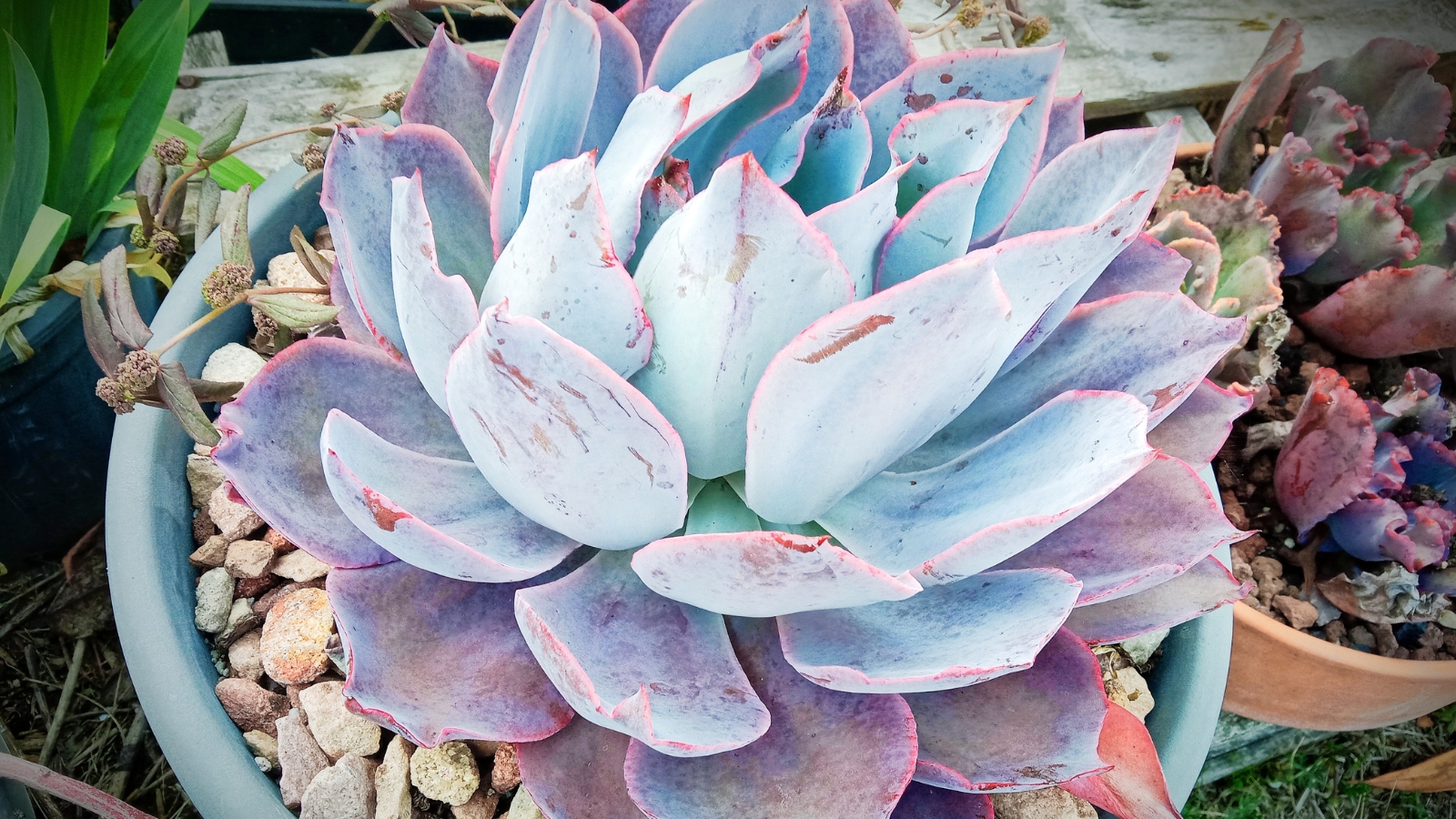

‘Afterglow’ is an even bigger choice, with rosettes of evenly ruffled leaves that develop as large as 12 inches in diameter. The leaves are violet with pink edges and solely a slight blue tint in direction of the center. It’s a vigorous grower.
Give your ‘Afterglow’ full photo voltaic to get the proper shade. The leaves will deepen in shade when uncovered to direct photo voltaic. It’s a large and inserting cultivar. It produces tall stalks of orange flowers within the summertime. Many gardeners take away these, nevertheless I imagine they’re gorgeous, and pollinators love them.
Sofia
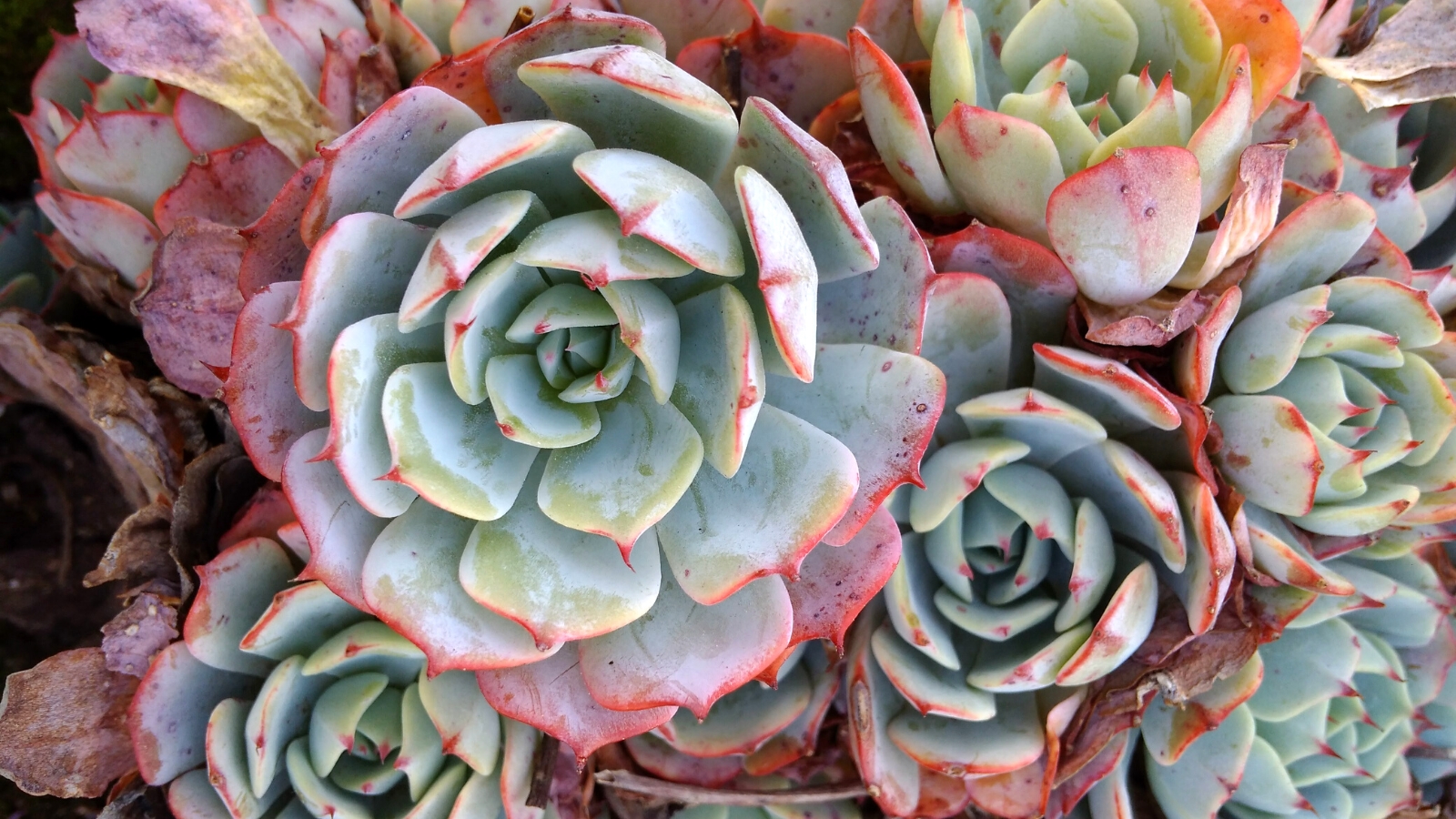

‘Sofia’ is an unassuming and sweet little echeveria. It has mild inexperienced leaves with a dusting of top of the range white hairs that defend it from intense photo voltaic publicity. The very concepts of the pointed leaves have a faint blush that may deepen with chilly or mild publicity.
It’s a robust grower which will attain 4 inches tall and 5 inches enormous. Within the summertime, ‘Sofia’ produces stalks of crimson, tubular flowers. Let your echeveria’s soil dry between watering to steer clear of root rot.
Cubic Frost
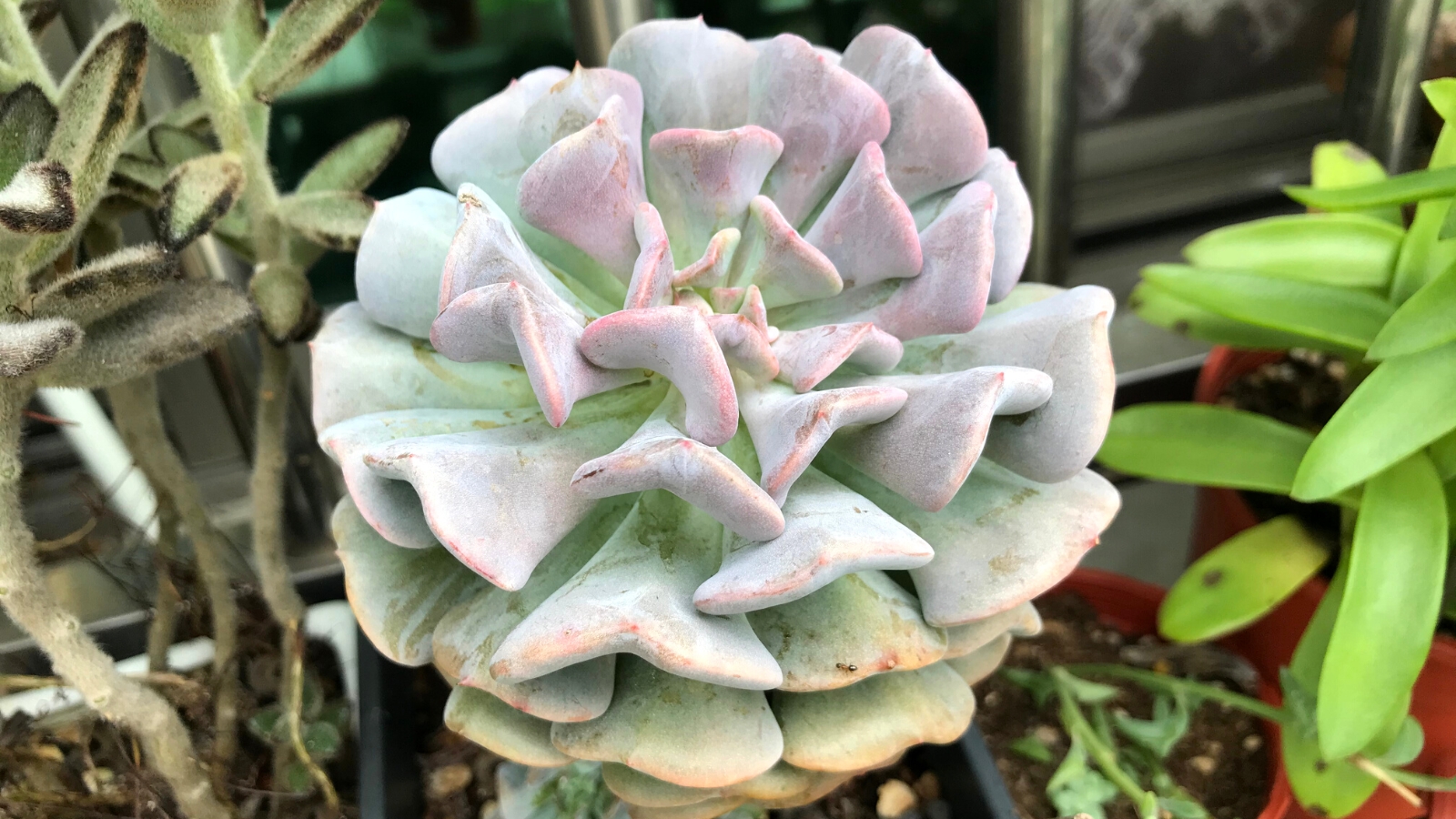

This hardy hybrid has a selected look that models it apart from totally different echeverias. ‘Cubic Frost has curved leaves with a central rib and squared-off ends. The leaves are very pale gray-green, with a faint dusting of white powder on the ground.
The frosted look brought on by the farina, or white powdery coating, is a vital safety mechanism. This coating helps to protect the plant from harsh, direct daylight. Whereas full photo voltaic is appropriate for these crops all through cooler local weather, within the summertime, they should have some shade throughout the afternoon.
Galaxy Blue
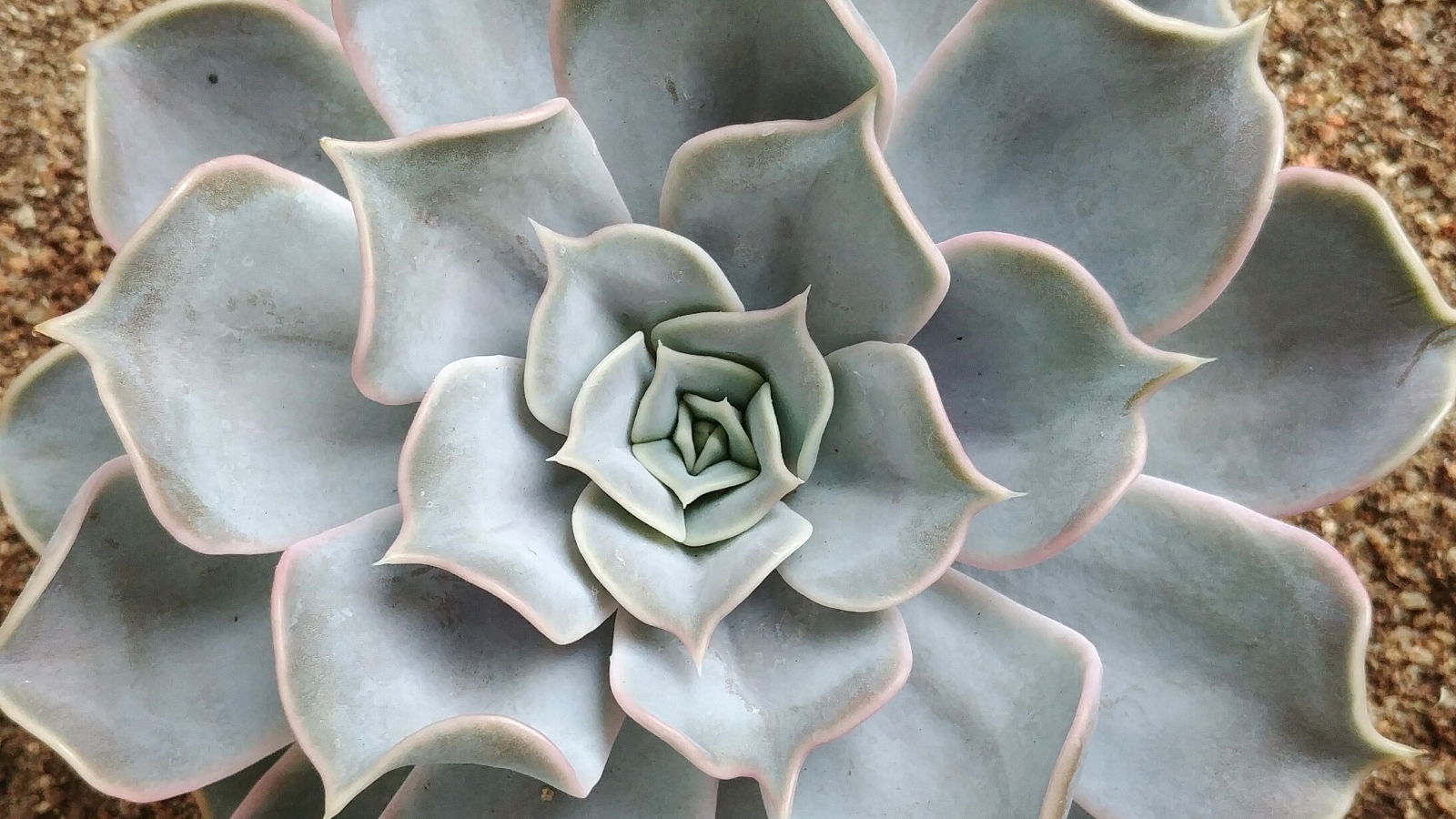

‘Galaxy Blue’ is a watch catching cultivar. This plant has steely blue-green leaves. They’re wavy and curve barely upward on the ends. The type of this choice is elegant and refined, with straightforward edges and the slightest degree to leaf ends.
This variety of echeveria grows close to the underside. Nonetheless rosettes may very well be as a lot as eight inches enormous. The loosely organized petals lie open, and the plant produces spikes of yellow flowers within the summertime.
Lipstick


‘Lipstick’ is a selected choice with longer, additional pointed leaves that lack the rounded edges frequent to the genus. The prolonged, lime-green leaves have darkish crimson edges that intensify when the plant experiences stress. For echeveria crops, some stress is good, as a result of it intensifies their fairly colors.
Together with the crimson edges of the leaves, the flowers are crimson, as correctly. This plant readily creates offsets, making it straightforward to propagate and share with mates. When watering, make it possible for to soak your echeverias correctly, after which allow them to dry sooner than watering as soon as extra.
Black Tetra
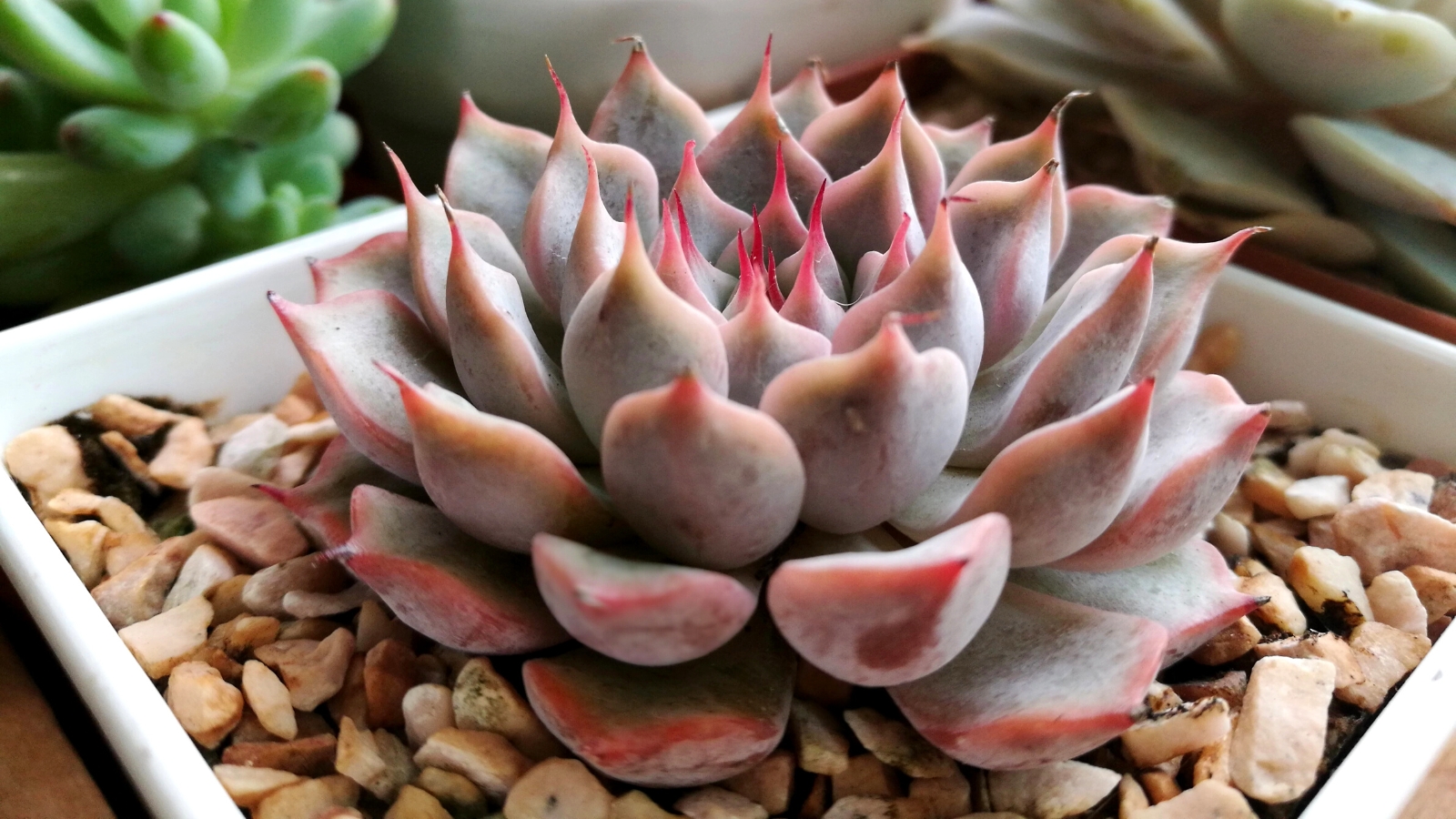

‘Black Tetra’ is a hybrid from Korea. It is a newer choice and may very well be significantly robust to hunt out. It is low-growing and has inserting coloration to the leaves. The leaves age to a deep gray-green nevertheless emerge vivid crimson. They’ve a lightweight dusting of top of the range white hairs that make the leaves look mild and velvety.
Its relative rarity makes this a implausible cultivar for collectors. As with totally different varieties, ‘Black Tetra’s’ colors will intensify with direct daylight. This choice turns into a very deep burgundy shade when careworn.
Blue Wren
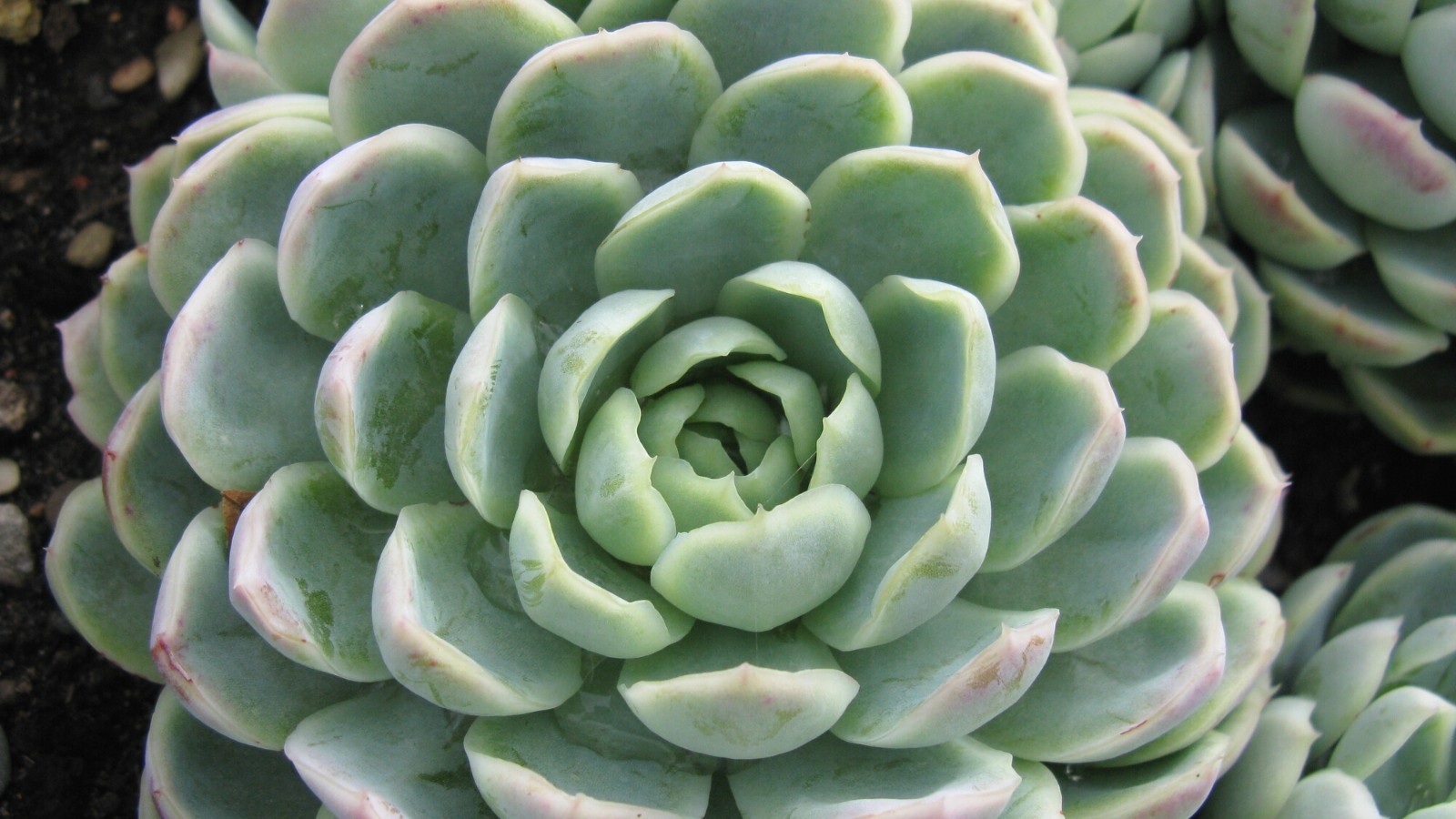

‘Blue Wren’ is an lovable variety of echeveria with further plump, fleshy leaves. The rounded leaves have a barely pointed tip that has a faint blush. The blush will deepen when the plant is uncovered to chilly or direct daylight.
This blue-green cultivar has a top quality waxy coating to the leaves. The low-growing rosette grows wider than it does tall. The leaves open out completely, making a cup type as a result of the plant matures.
Raindrops
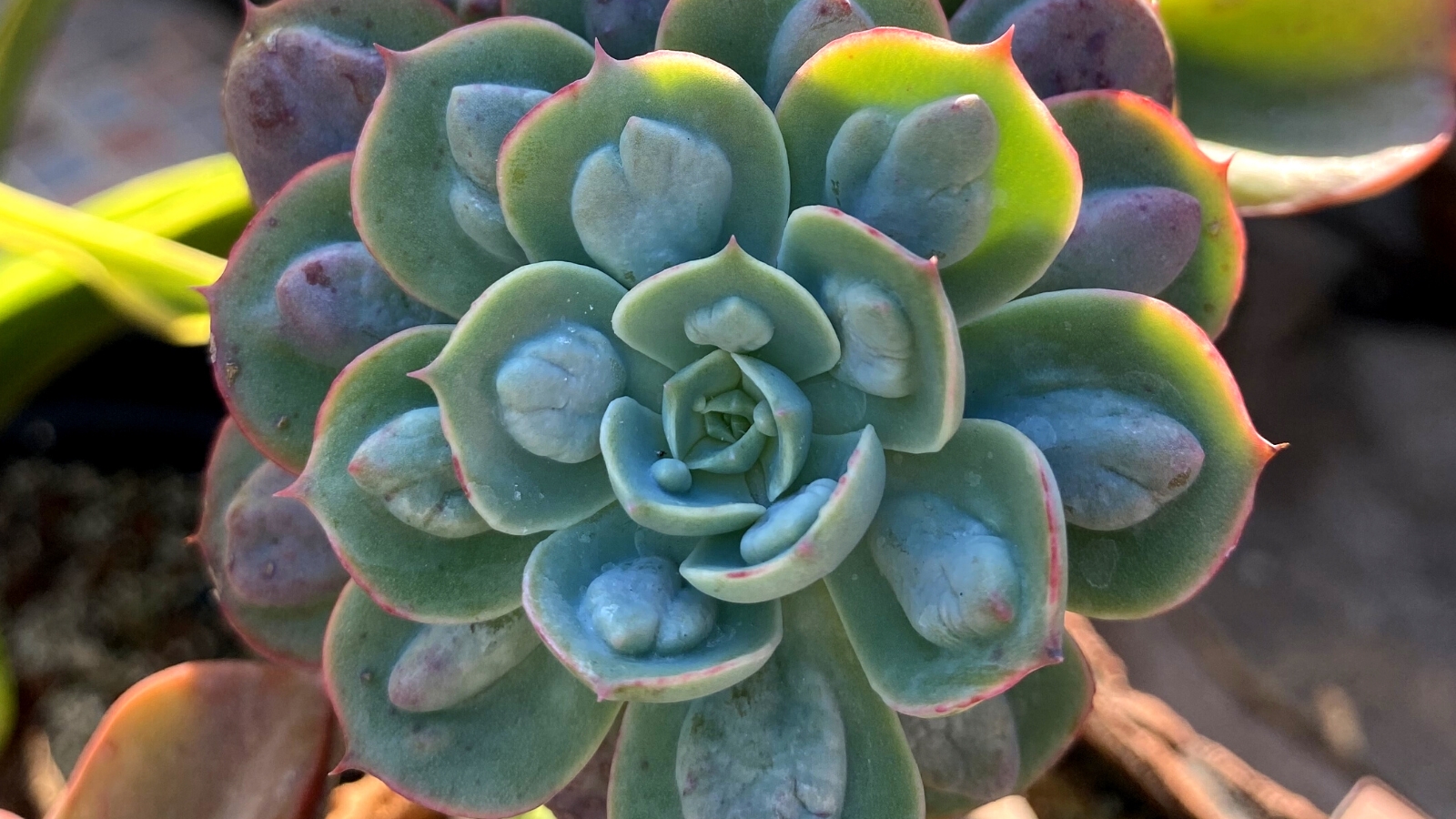

This pleasant hybrid has small spherical bumps on its leaves, incomes it the title ‘Raindrops.” These bumps develop most pronounced when the plant simply is not uncovered to direct photo voltaic. The leaves are flat, and teardrop fashioned, in a satisfying shade of blue-green.
The crimson margins on the leaves are faintly pink, a shade that intensifies with additional mild or chilly temperatures. For well-developed bumps and a blush as correctly, give your ‘Raindrops’ vivid, nevertheless indirect daylight for most of the day.
Moon Stone
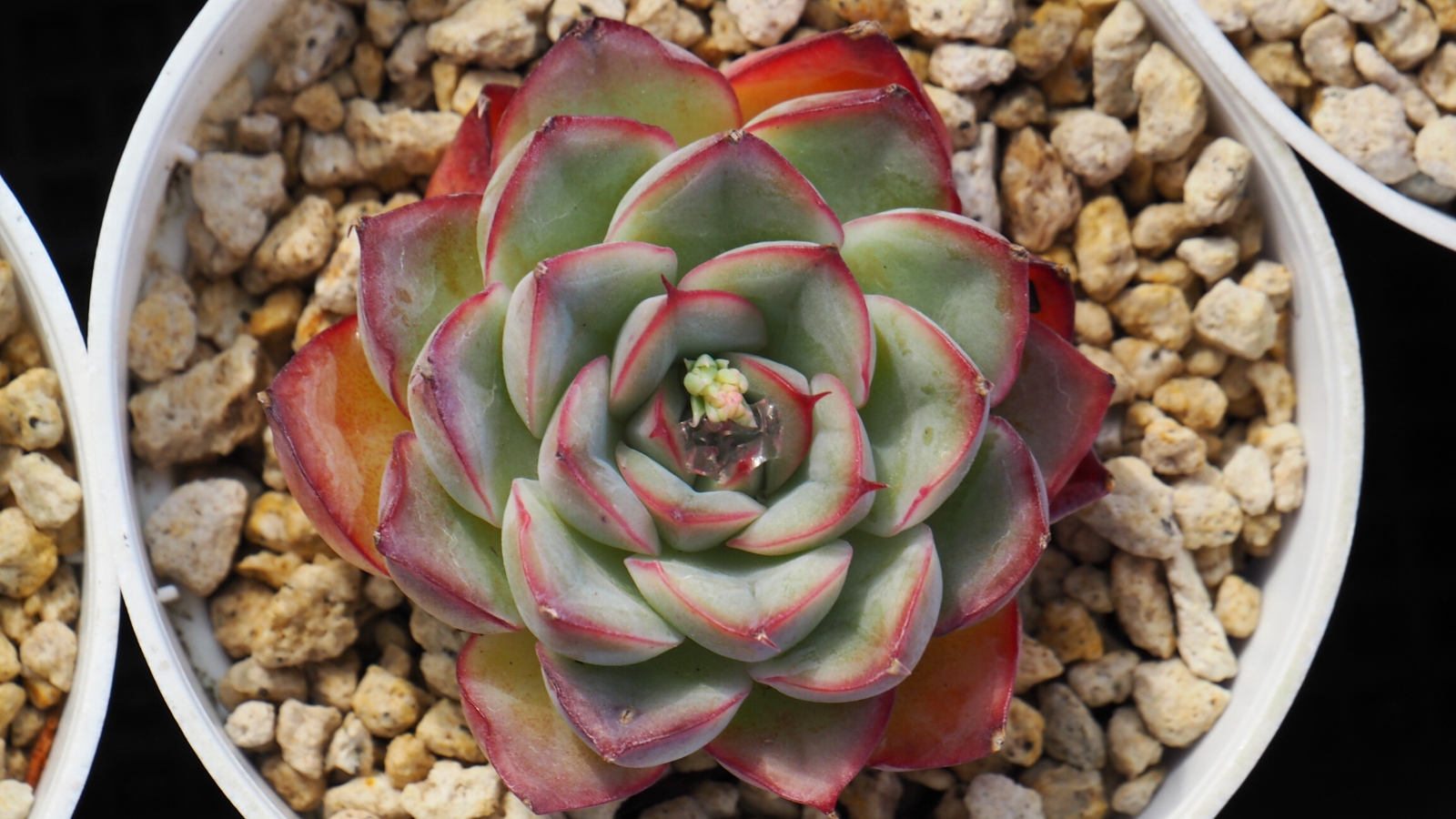

‘Moon Stone’ is a plump and fleshy choice with apple inexperienced, pointed leaves. The leaves are crimson on the edges, and stress intensifies the color. In fall, all of the plant takes on an excellent vermilion tint.
Give ‘Moon Stone’ about 4 to six hours of direct photo voltaic every day. In summer season season, vivid, nevertheless indirect mild is biggest. This cultivar produces crimson flowers within the summertime. On a regular basis overwinter your echeveria crops indoors besides you yard in zones eleventh of September.
Topsy Turvy
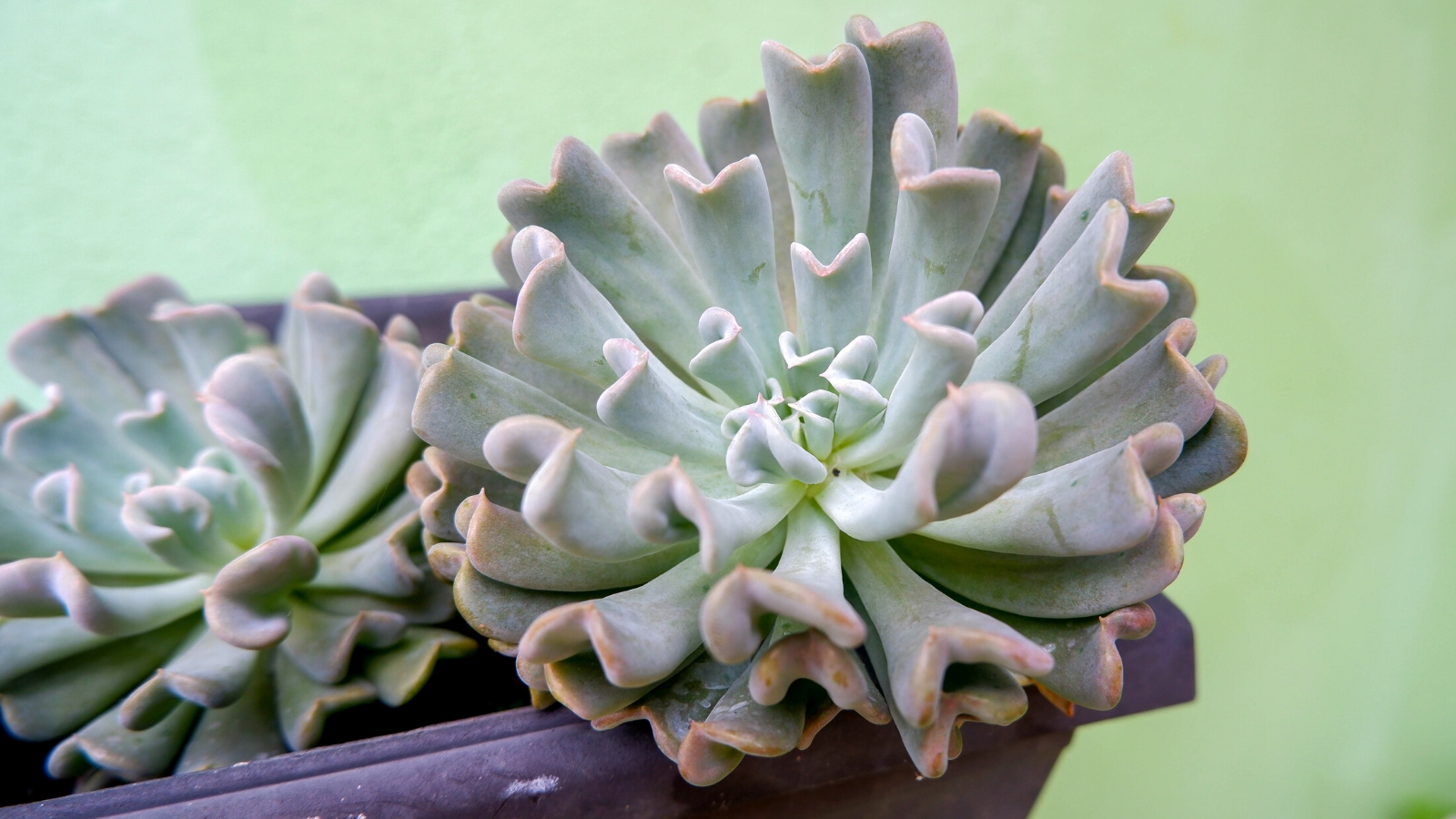

For individuals who’re seeking a novel cultivar, ‘Topsy Turvy’ is an excellent chance for the succulent yard. The prolonged, slender leaves are pale gray-green. In all probability essentially the most fascinating attribute of the leaves is their irregular order. The leaves have a ridge down the center and bend upwards or down in direction of the underside.
‘Topsy Turvy’ does a implausible job of producing offsets. That could be a easy choice to propagate. The plant stays close to the underside comparatively than forming prolonged stems. Flower spikes variety within the summertime and produce vivid crimson flowers.
Black Knight
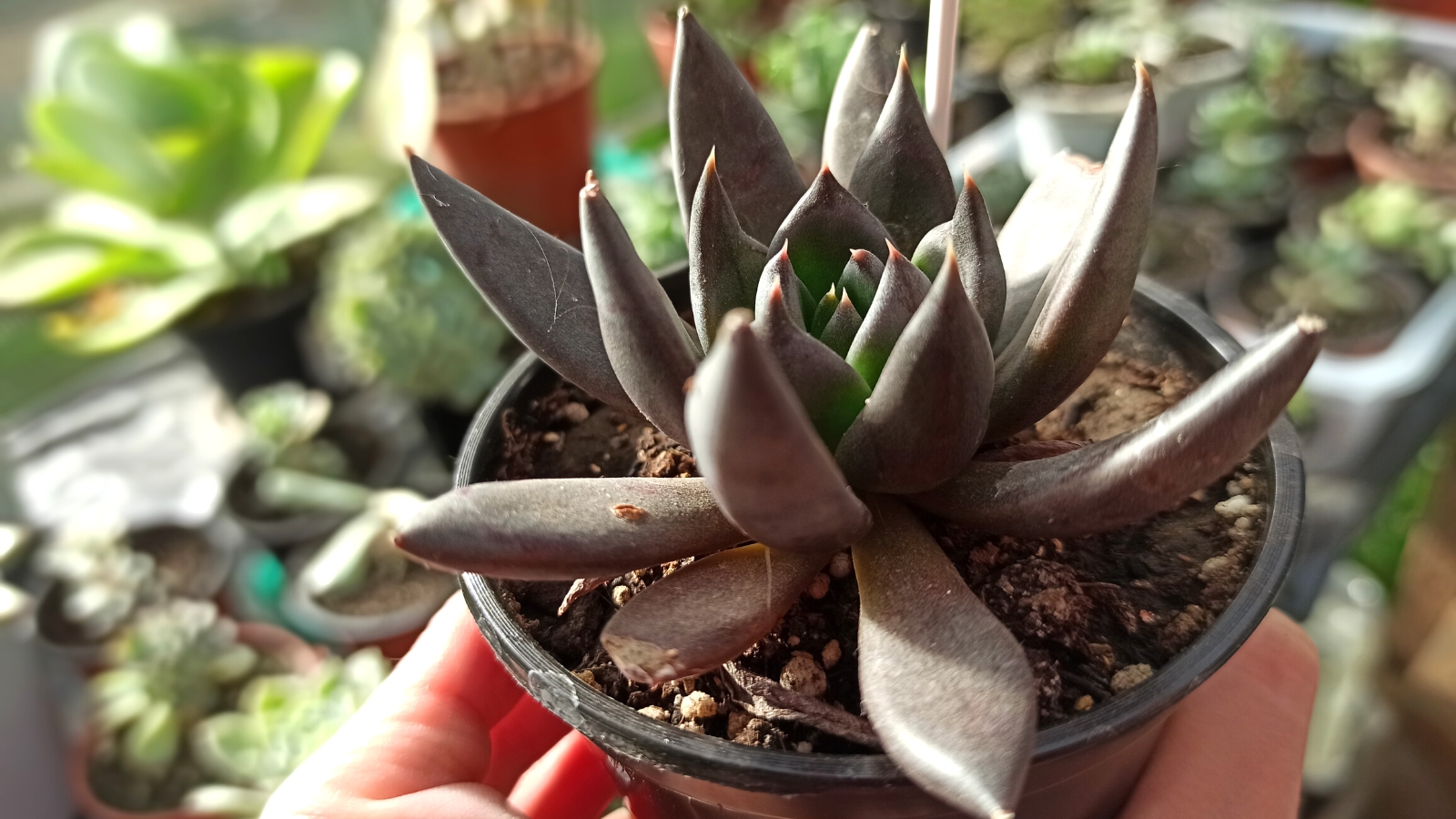

‘Black Prince’ is a very darkish choice with virtually black leaves. This choice, nonetheless, is Black Knight. It makes an excellent specimen for the collector and seems nice in a succulent yard. For some further distinction in a succulent affiliation, you presumably can’t beat this fascinating echeveria.
The leaves on ‘Black Knight’ are prolonged and deeply pointed on the ends. The color is a deep purple-green, and when uncovered to emphasise, the color deepens nonetheless. The flowers are bell-shaped and inexperienced with a crimson corolla.
Marcus
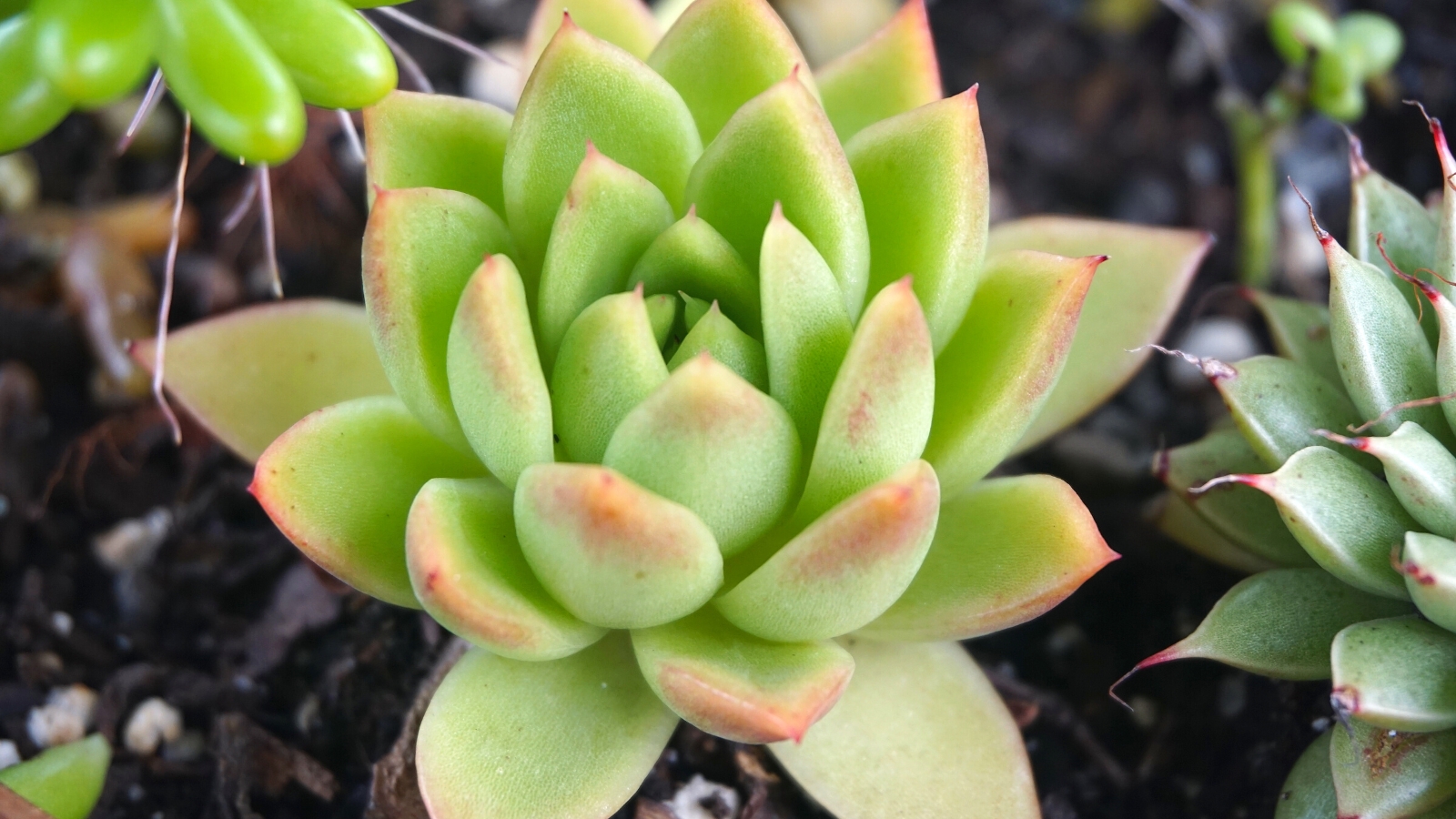

‘Marcus’ is a conventional echeveria with straightforward leaves which have pointed ends. The neatly organized rosettes have solely a hint of blush to the very edges and concepts. This intensifies in chilly or direct daylight. This choice produces offsets readily, making propagation easy.
By means of popularity, ‘Marcus’ is simple to hunt out and recognized for its engaging variety and colors. Its leaves are vivid inexperienced and waxy, with out the white fuzz that is frequent to the genus.
Coronary coronary heart’s Delight
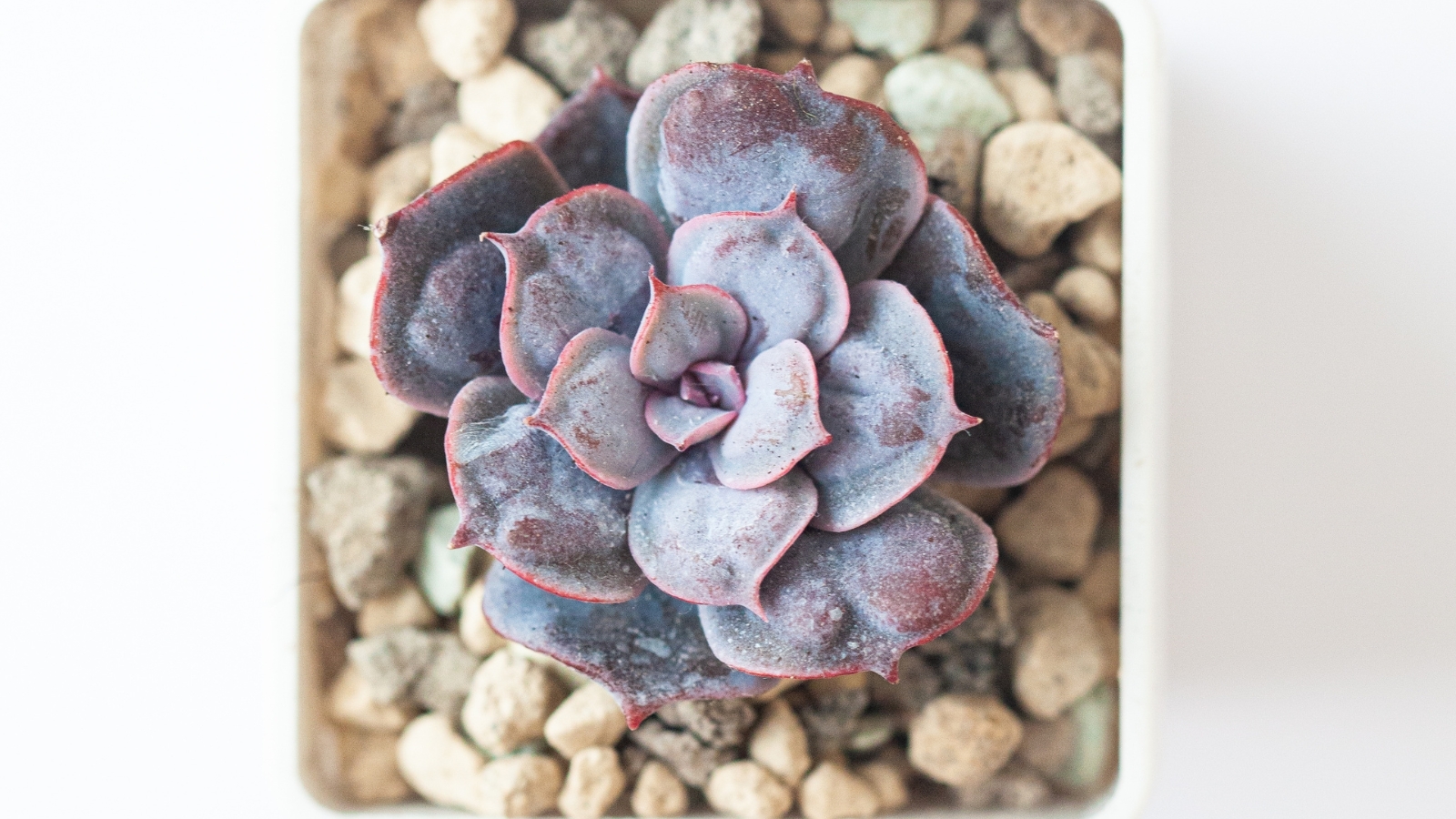

‘Coronary coronary heart’s Delight’ is a wide array with further bumpy leaves. Similar to ‘Raindrops,’ this echeveria has what seem to be bumps or blisters on the ground of its leaves. The leaves are blue-green with a powdery finish. The place ‘Raindrops’ has small, fairly uniform bumps, ‘Coronary coronary heart’s Delight’ has additional pronounced bumps.
This cultivar is an enormous one, it doesn’t develop tall, nevertheless the rosettes can develop as a lot as eight inches enormous. ‘Coronary coronary heart’s Delight’ is a pleasant dialog piece in order so as to add to your succulent yard. Its distinctive look is definitely eye-catching. In direct photo voltaic or chilly local weather, the leaves blush pink. The flowers are pink, as correctly.
Silver Queen
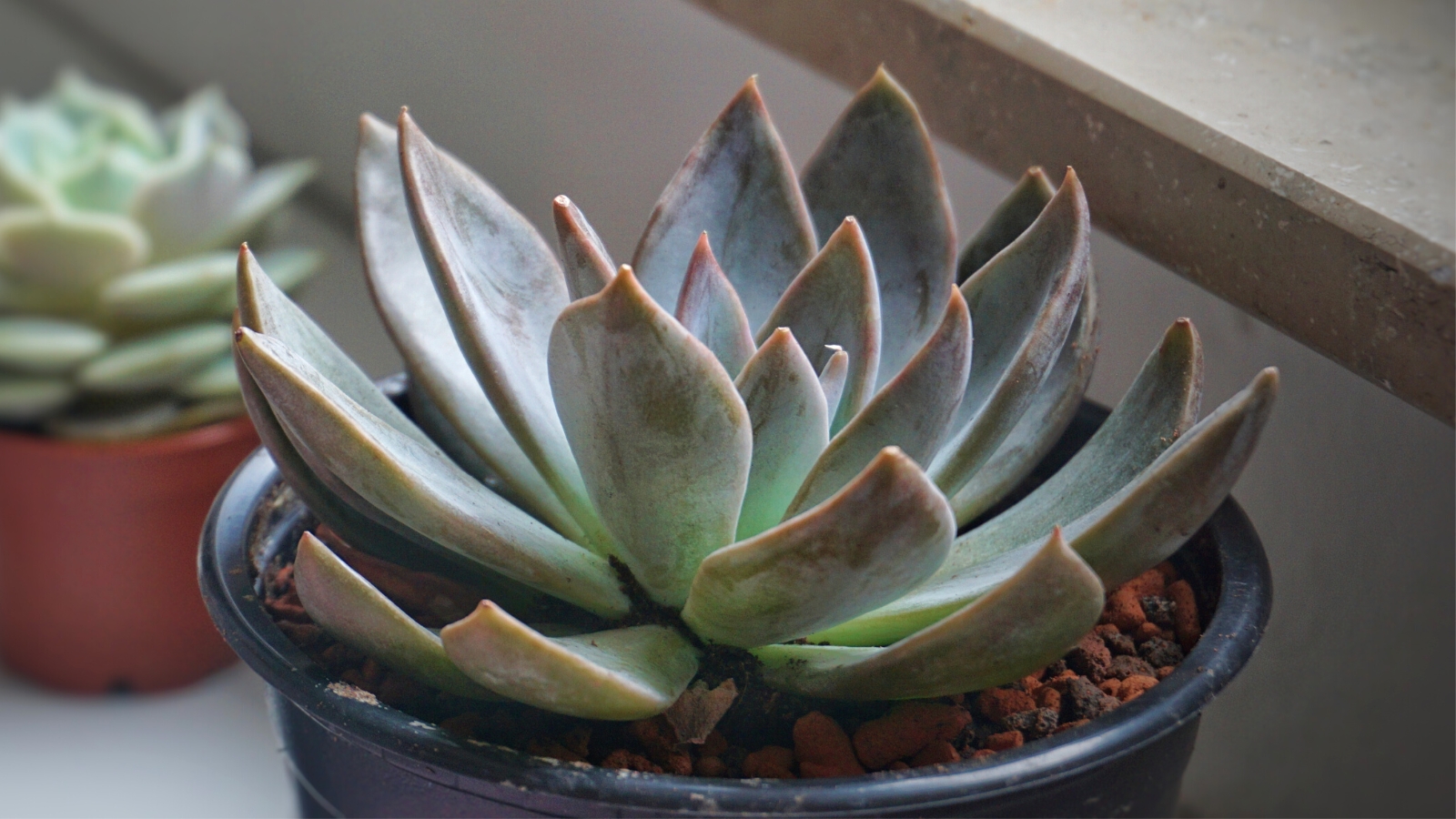

‘Silver Queen’ is a chic cultivar with a novel leaf shade. Whereas most types of echeveria sort out a crimson or purple hue from stress, this one begins out lavender. The silvery-purple leaves are prolonged, curved, and pointed. This plant’s rosettes keep cup-shaped comparatively than opening out flat.
The leaves of this choice are additional slender than most, and the rosettes can attain as a lot as eight inches all through. When careworn, ‘Silver Queen’ takes on a pink or coppery tone. In summer season season, it produces flower stems with clusters of pink blooms.
Purple Pearl
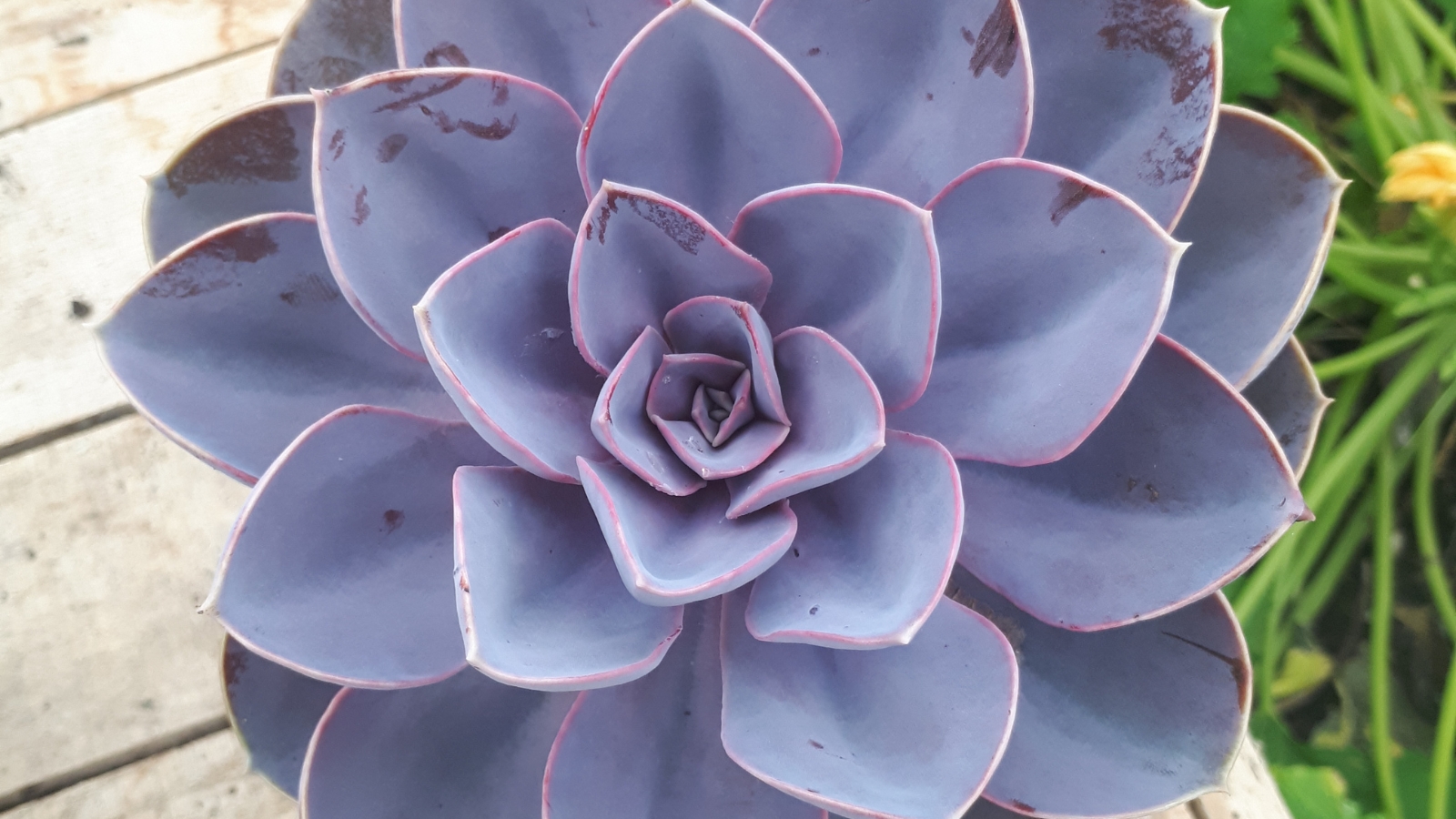

That’s my personal favorite and one which I’ve in my very personal yard. ‘Purple Pearl’ is a wide array, with rosettes which will develop as a lot as 12 inches all through at maturity. The leaves are spoon-shaped and the loveliest shade of lavender. There could also be pink alongside the modern margins of the leaves. It has a glowing look in consequence.
‘Purple Pearl’ is frequent in floristry, as a result of it appears to be enticing in a scale back flower affiliation. In summer season season, this cultivar sends up one-foot-tall inflorescences tipped with coral-pink flowers. When careworn by chilly or mild, ‘Purple Pearl’ takes on additional of a pink blush to its purple leaves.
German Champagne
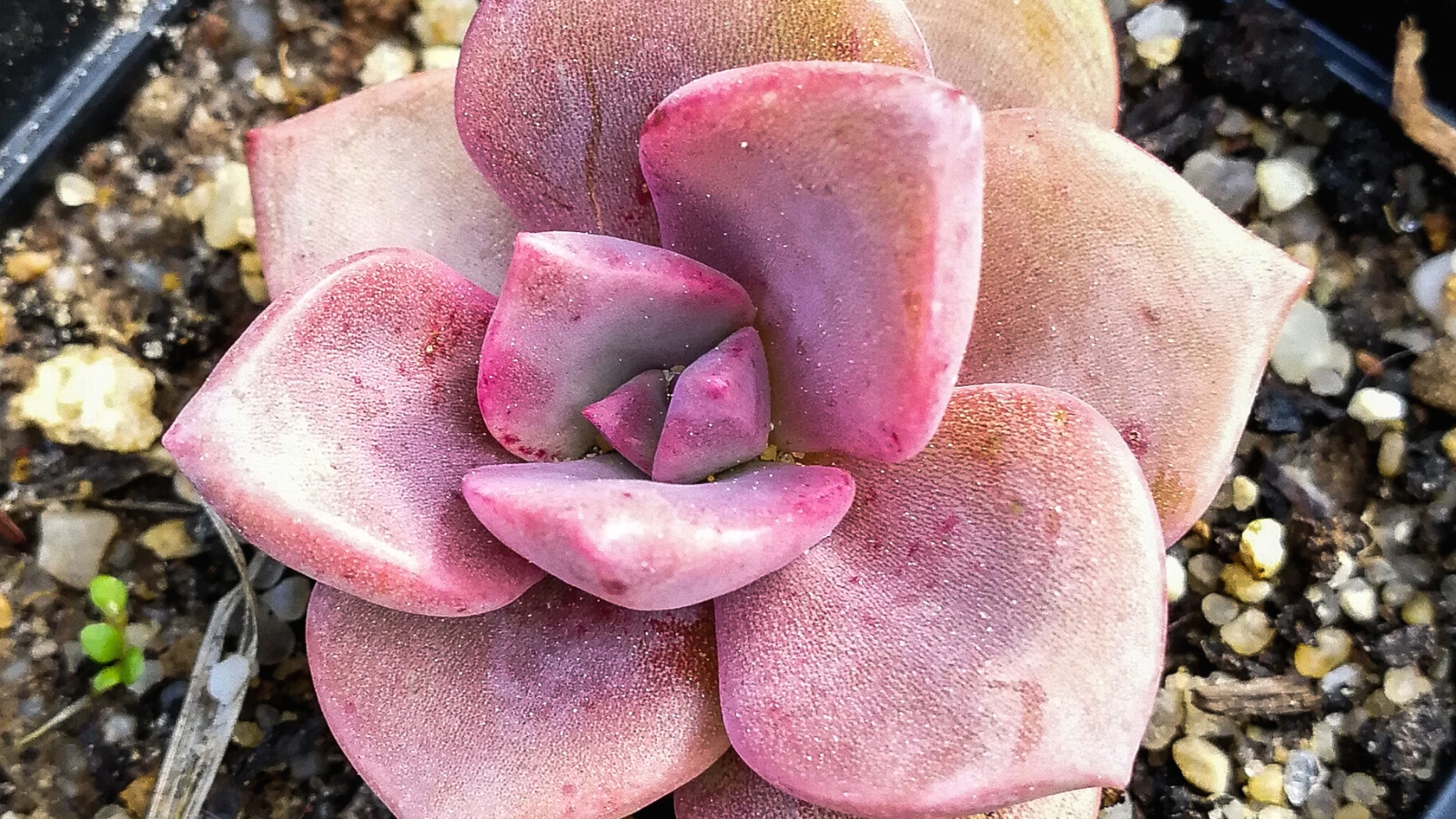

Certainly one of many additional vibrant varieties, ‘German Champagne’ is rare and pleasant. Thick, fleshy rosettes of rose gold have a deep pink center. New leaves emerge virtually crimson sooner than fading to a additional golden hue. The leaves are typically evenly speckled and coated with a thin, waxy coating.
‘German Champagne’ is more durable to hunt out than many in fashion cultivars. Its distinctive coloring makes it fascinating. So, when this choice hits the cupboards of the native nursery, they go shortly. It readily locations out offsets, so why not propagate and share this cool echeveria?
Mexican Firecracker
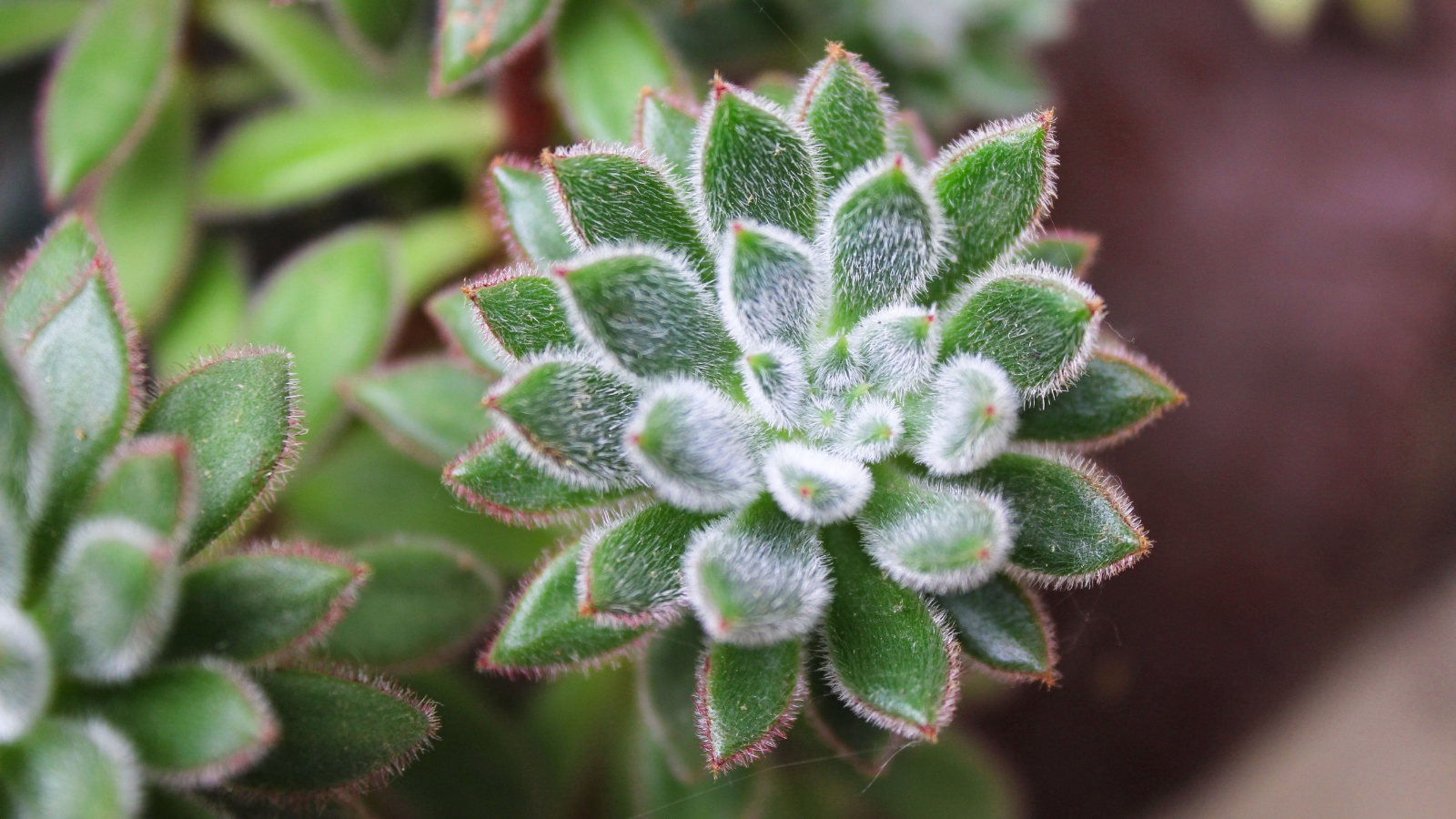

Mexican firecracker plant, or Echeveria setosa, is the one fuzzy choice on our document. Barely than the top quality, waxy coating of many sorts, his one has seen hairs and an complete fuzzy texture. The leaves are slender and apple-green in direction of the center. As they age and are uncovered to photo voltaic or chilly, the ends flip crimson.
It’s a pretty cultivar that has a mounding conduct. The overall affect is of a very mild and splendid plant. Mexican firecracker plant tolerates direct photo voltaic and may perform correctly in a sunny window.
Flying Cloud
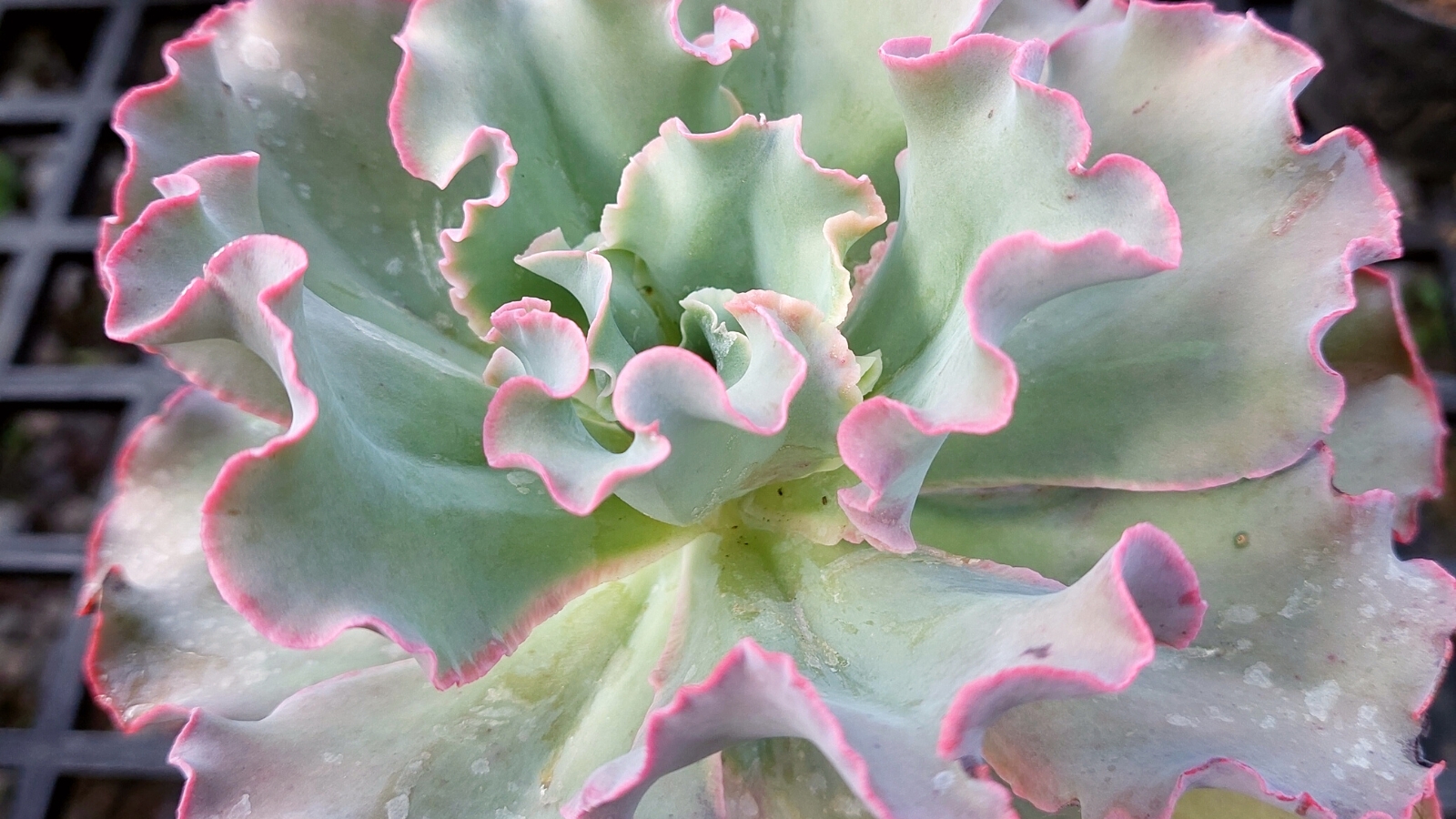

Rounding out our document is ‘Flying Cloud,’ which is a wonderful, variegated echeveria. The unfastened and comparatively large rosettes have spoon-shaped leaves with scalloped edges. They’ve ivory and blue-green variegation with a pink tint to the edges.
‘Flying Cloud’ is commonly a solitary rosette and has a quick stem. Sadly it’s not almost nearly as good for floristry as some others. The variegation makes this noteworthy, and it is positive to draw consideration. The flowers are coral-red and bloom within the summertime.
Closing Concepts
These good little crops nearly preserve themselves. Their magnificence lies of their gorgeous rosette variety and exquisite floral reveals. Whenever you get started with echeverias, it will be greatest to amass all the differing kinds. I extraordinarily recommend rising some and sharing your offsets with totally different plant-loving mates.
[ad_2]
Provide hyperlink
